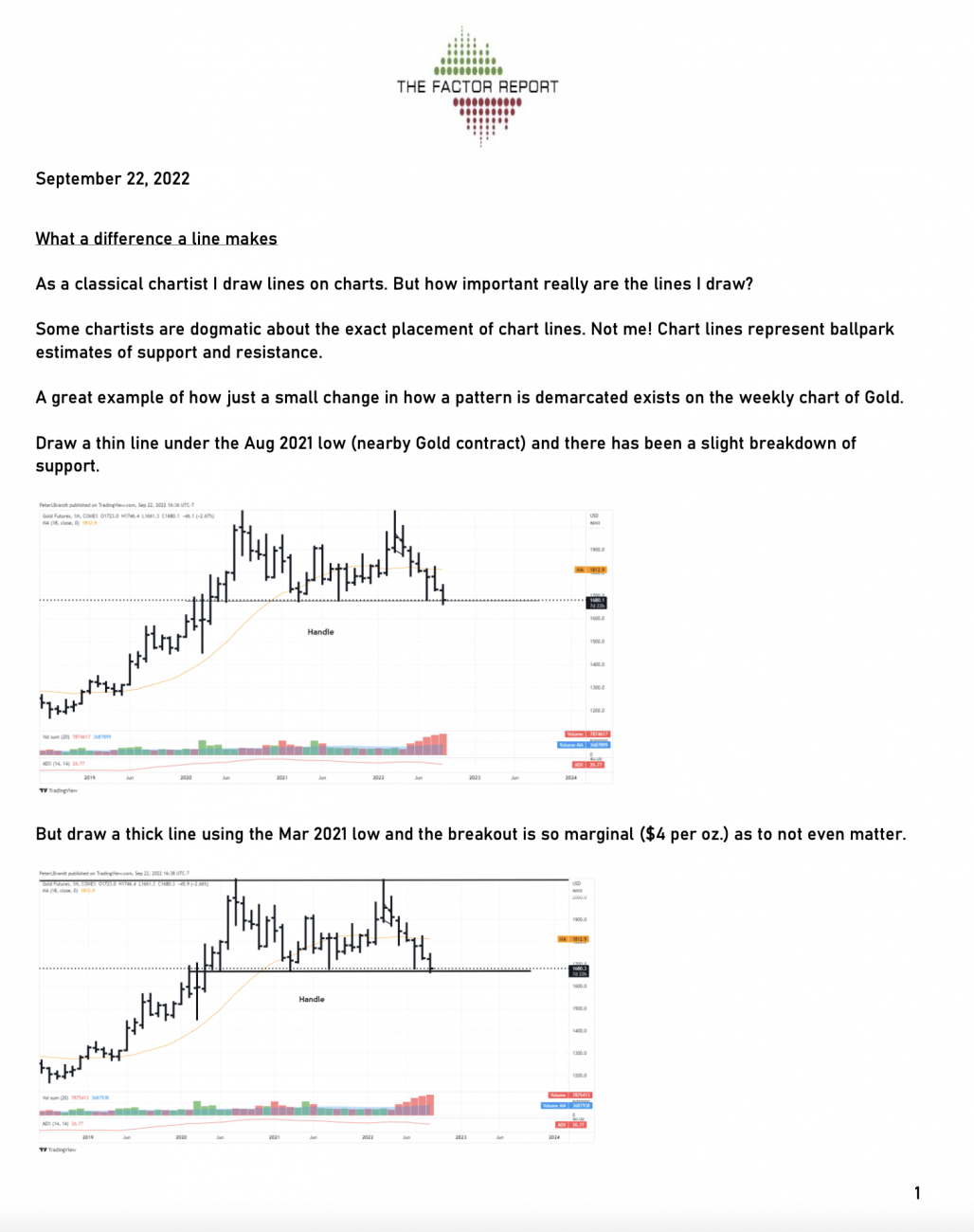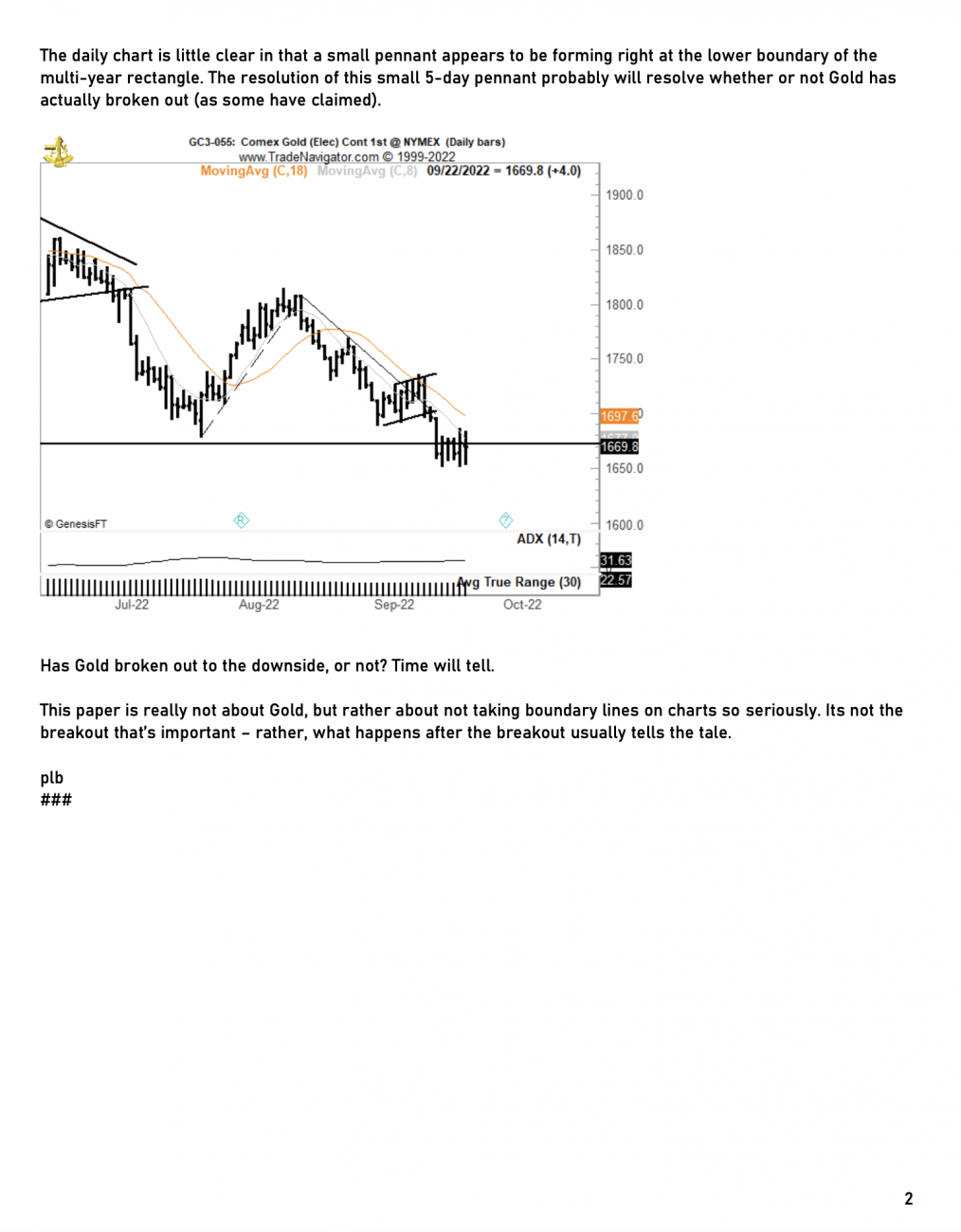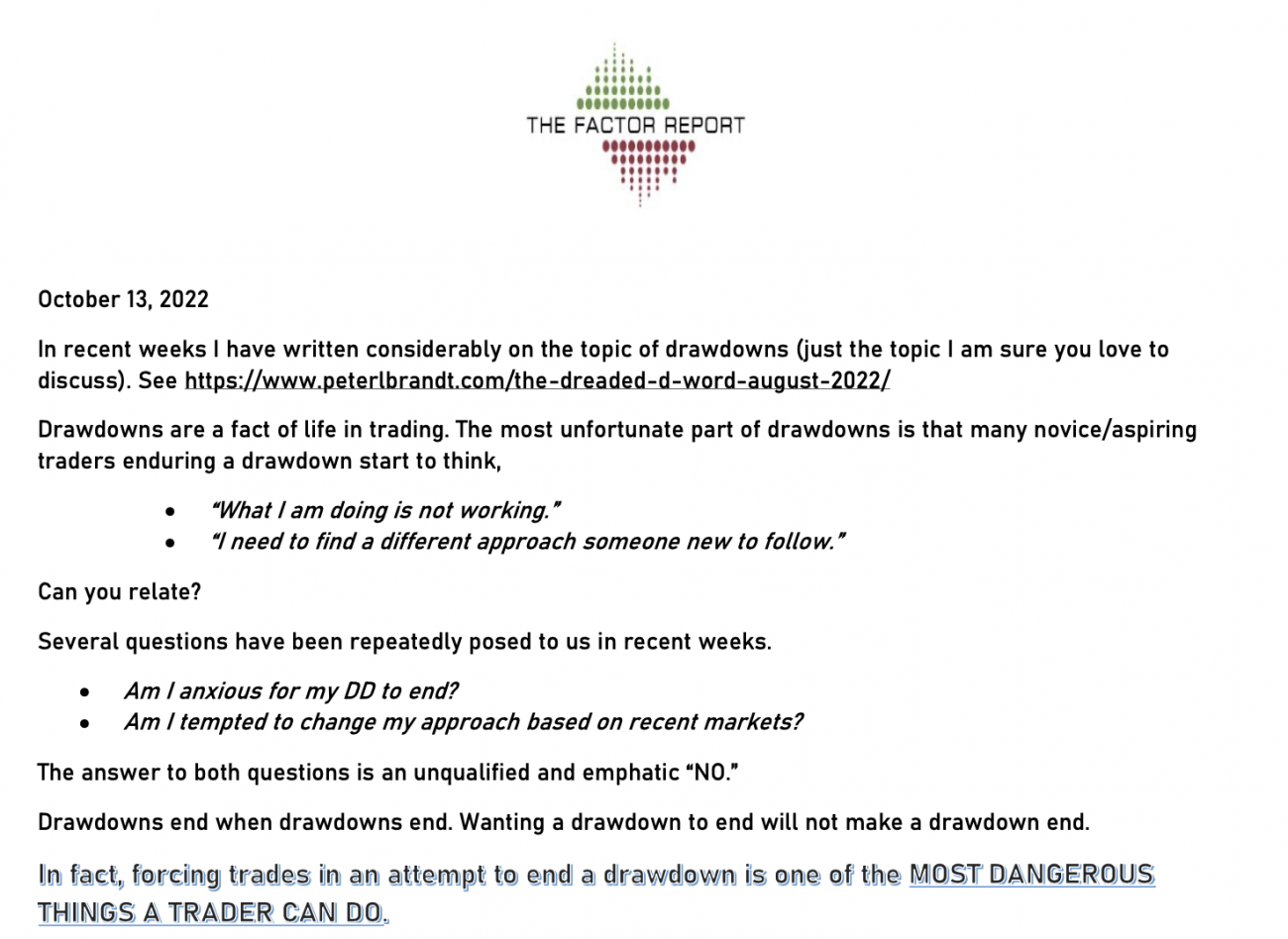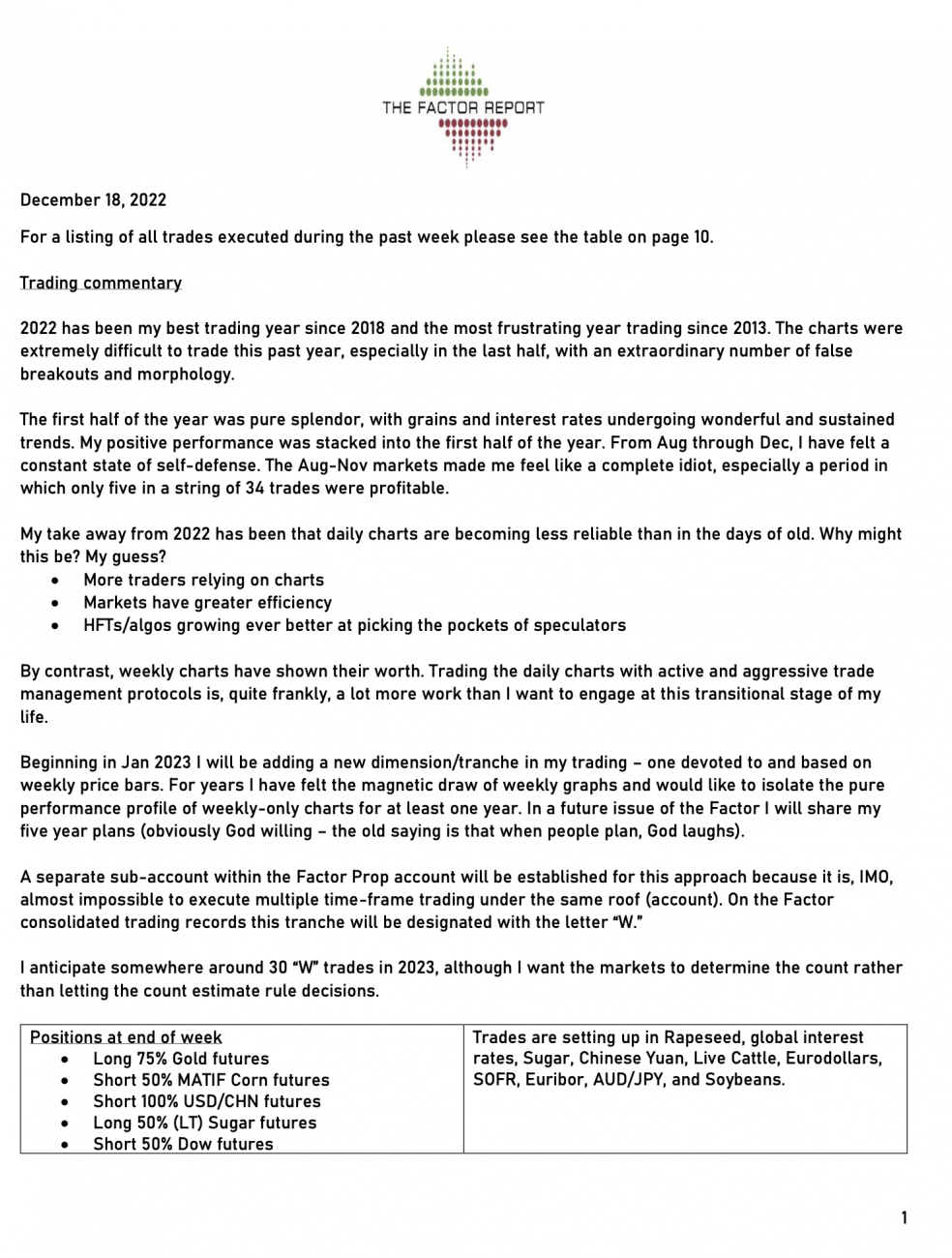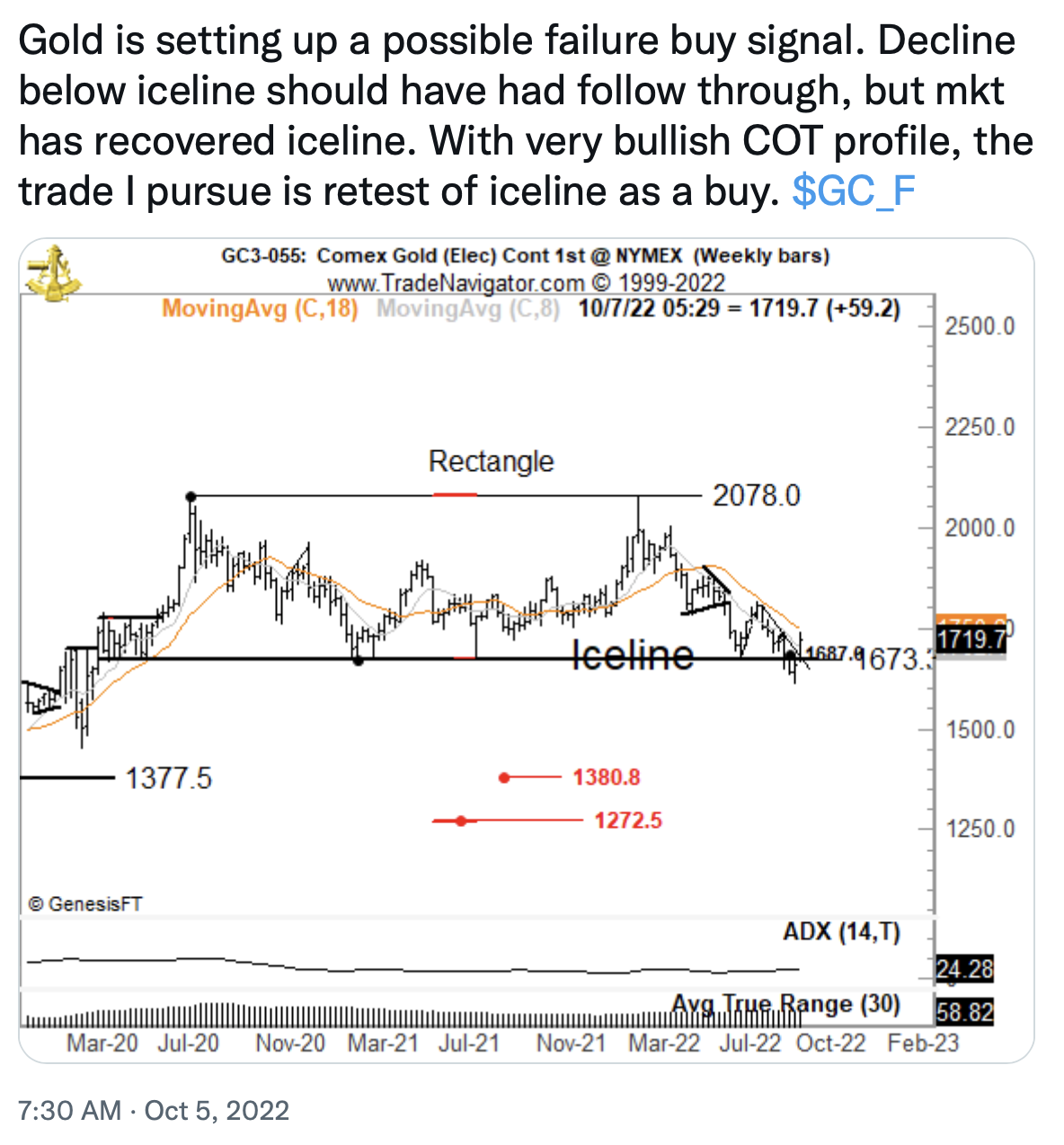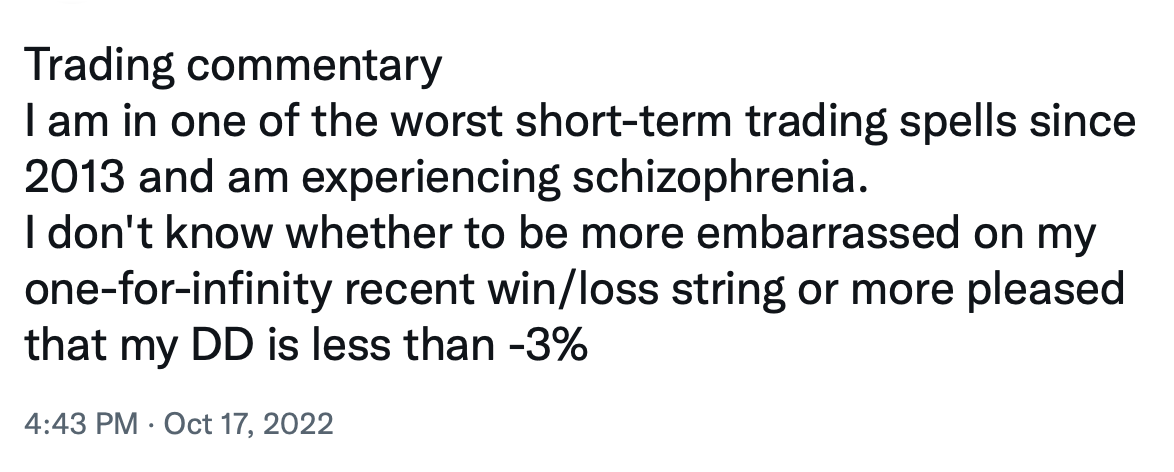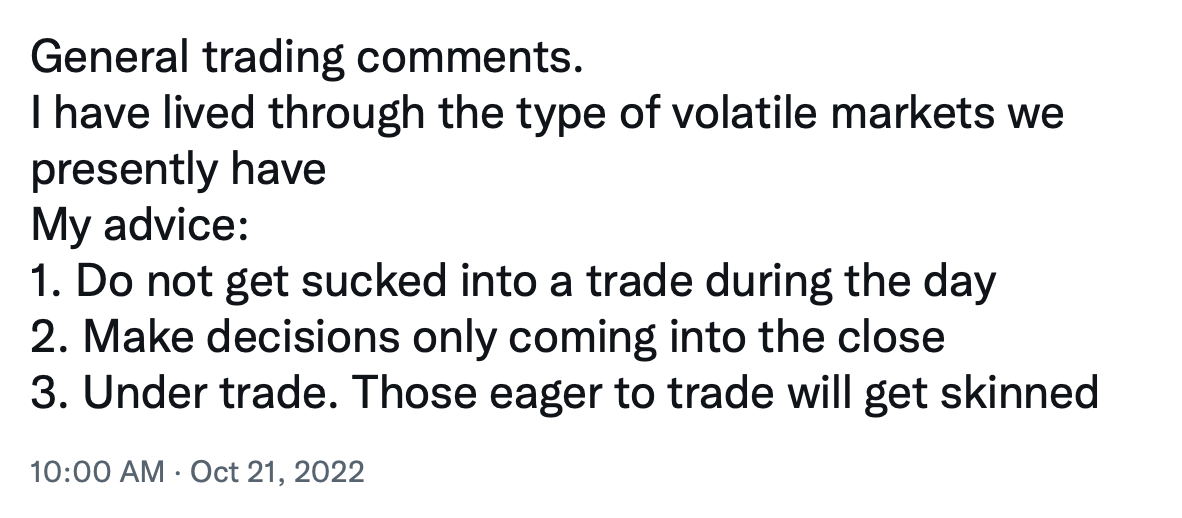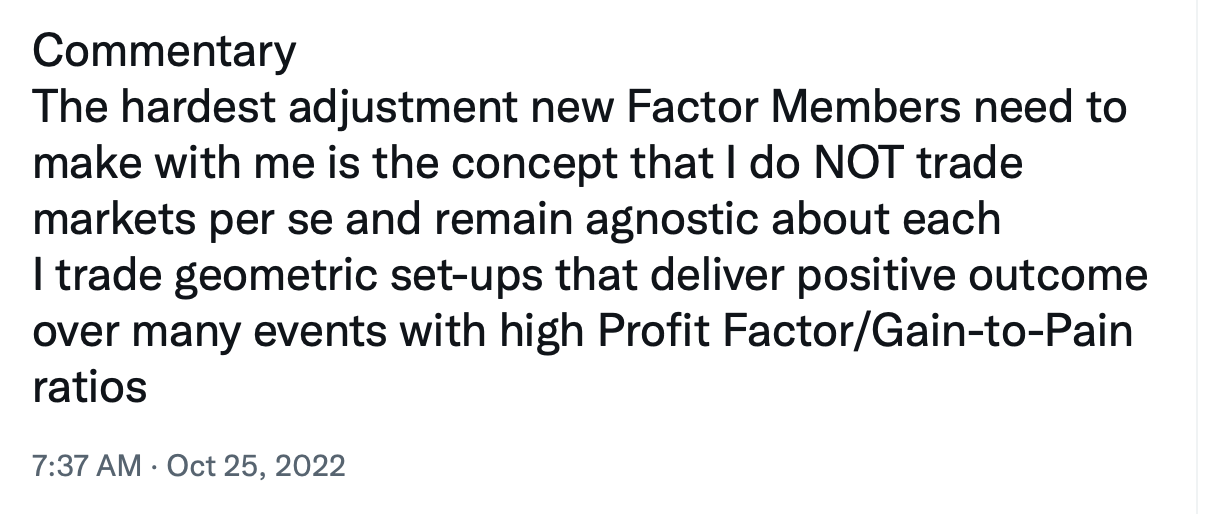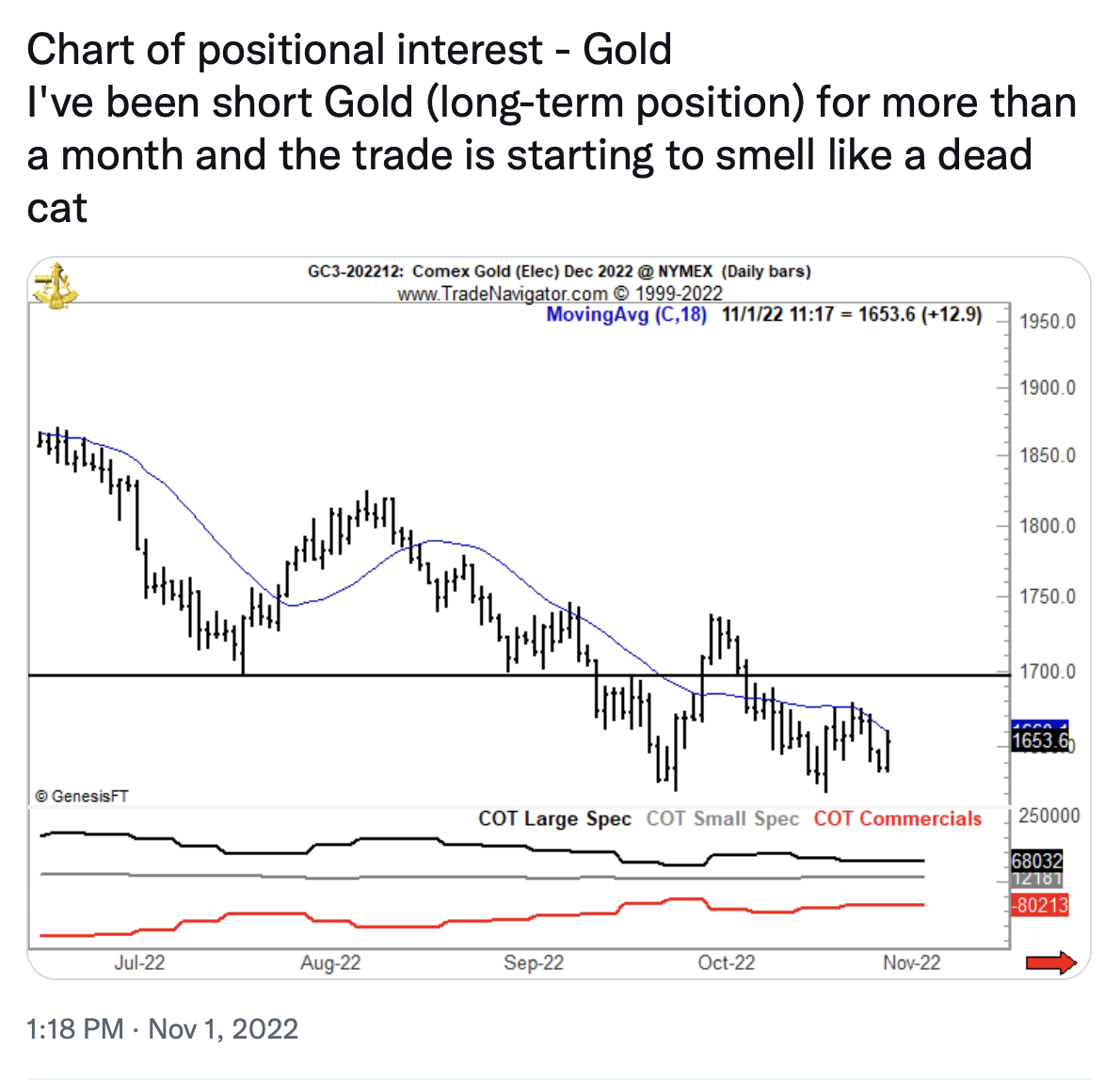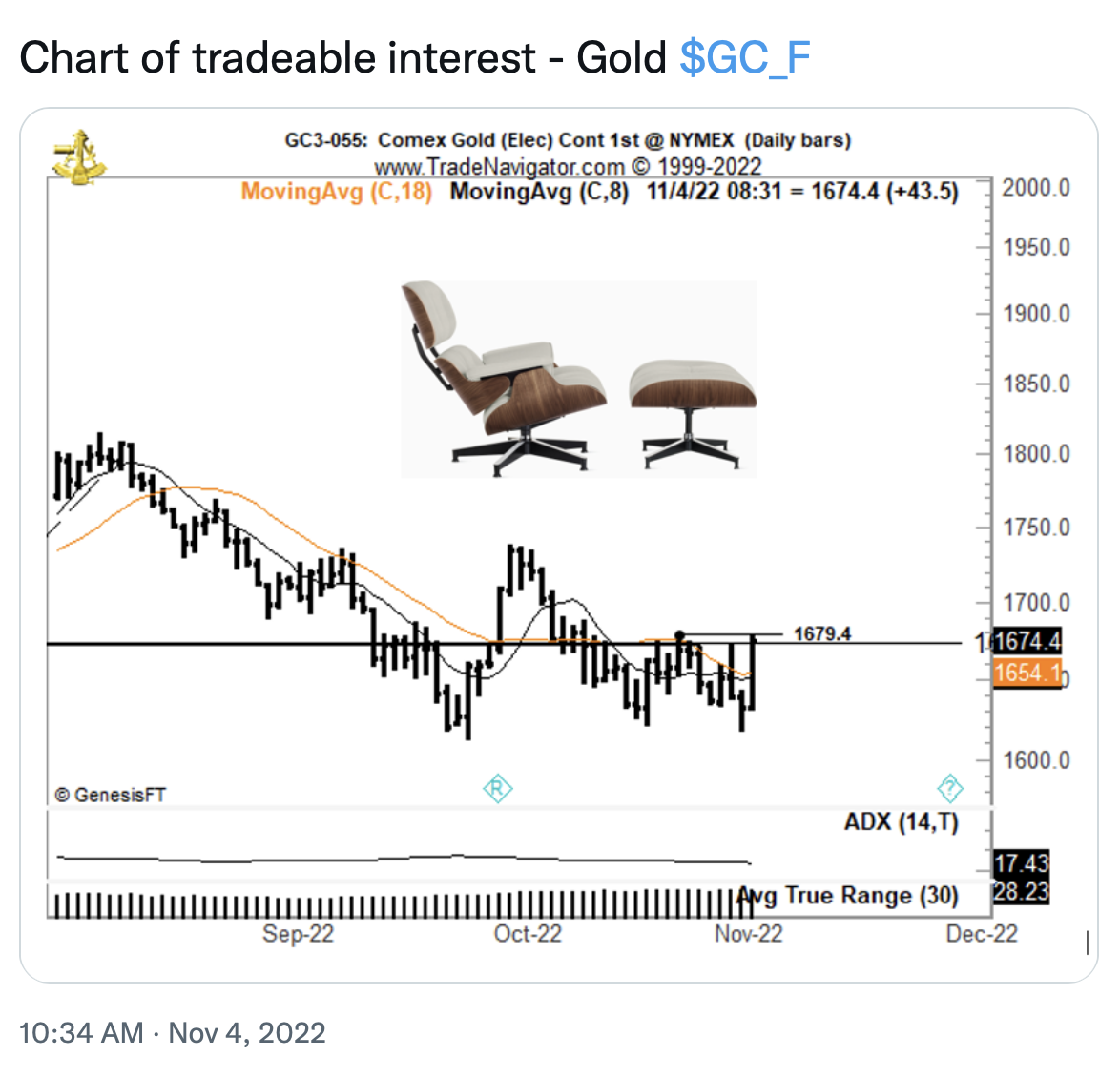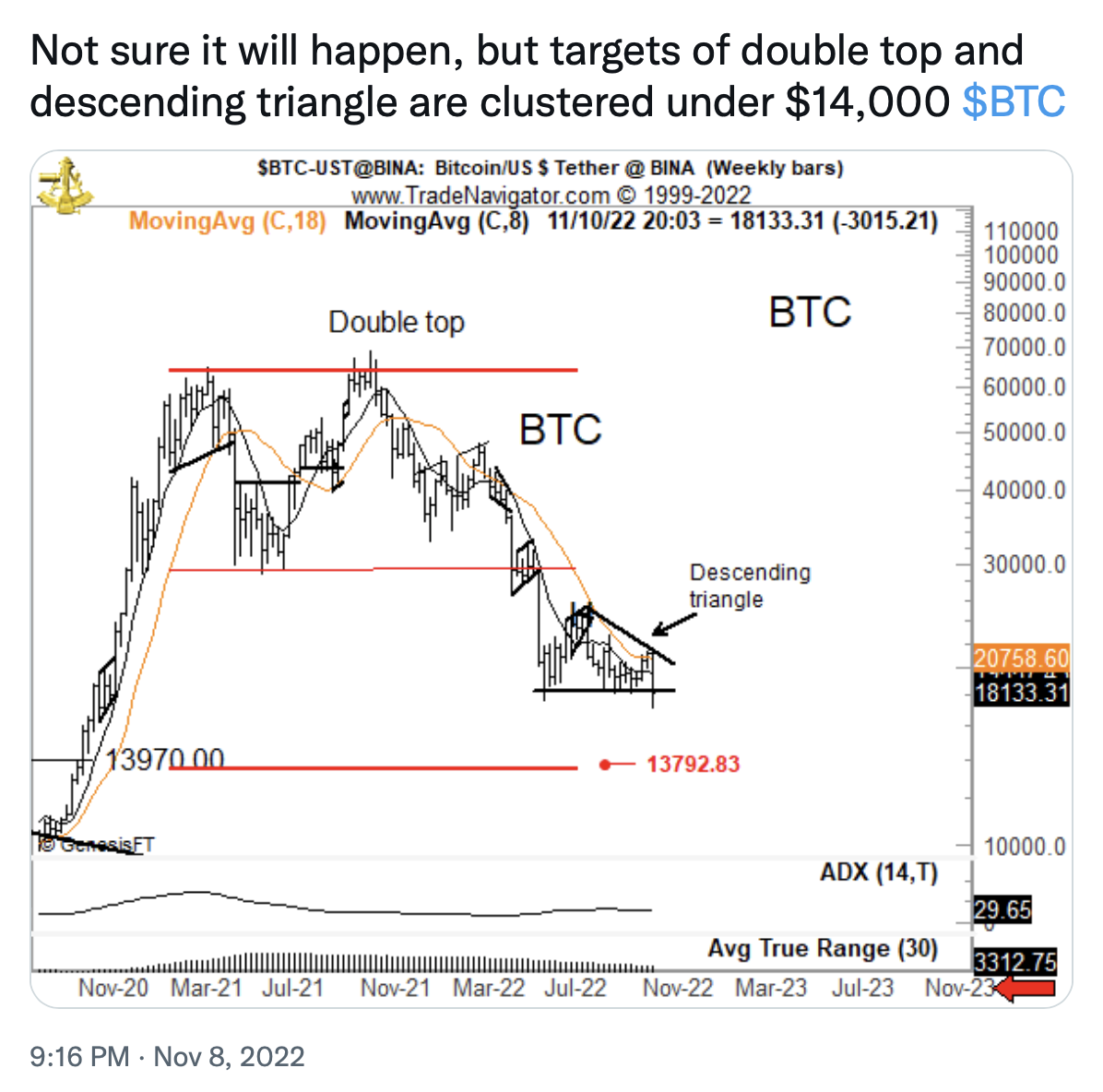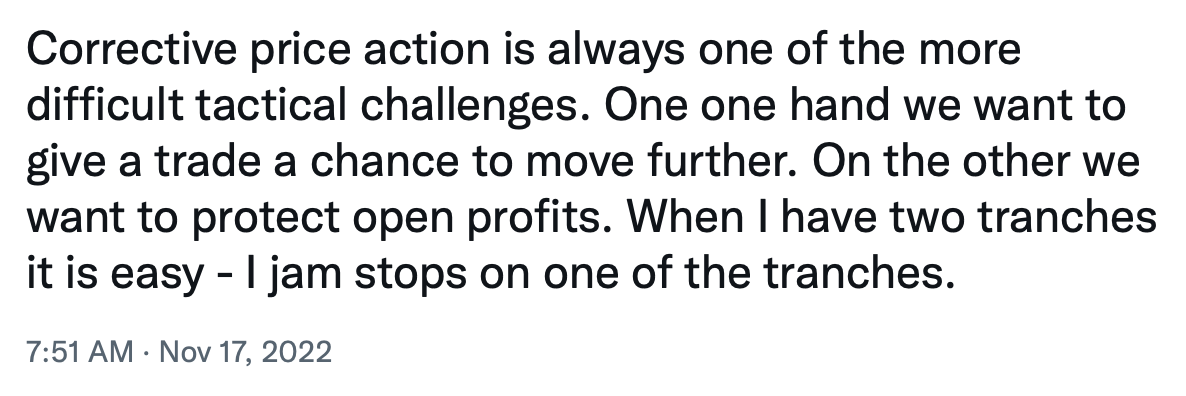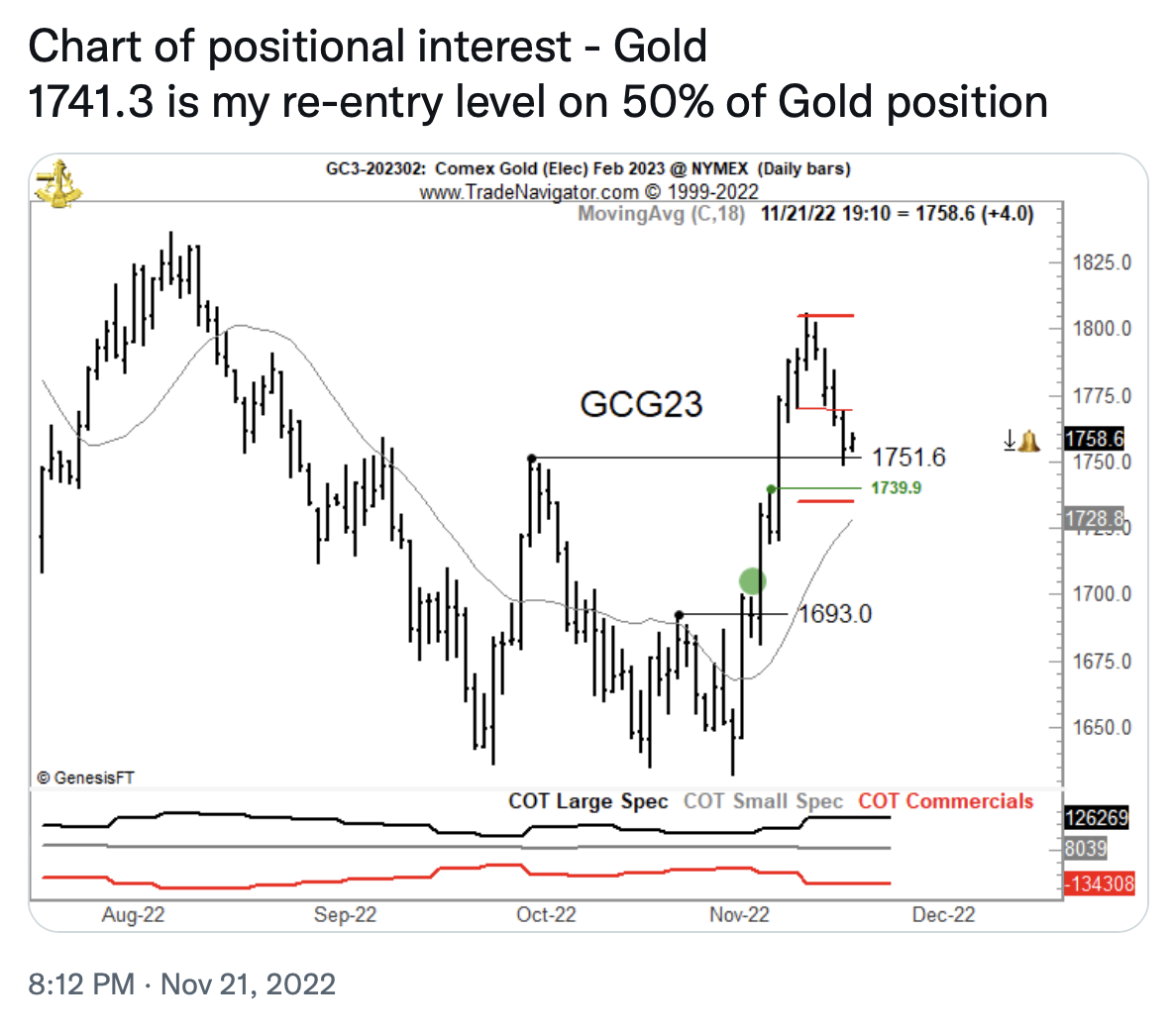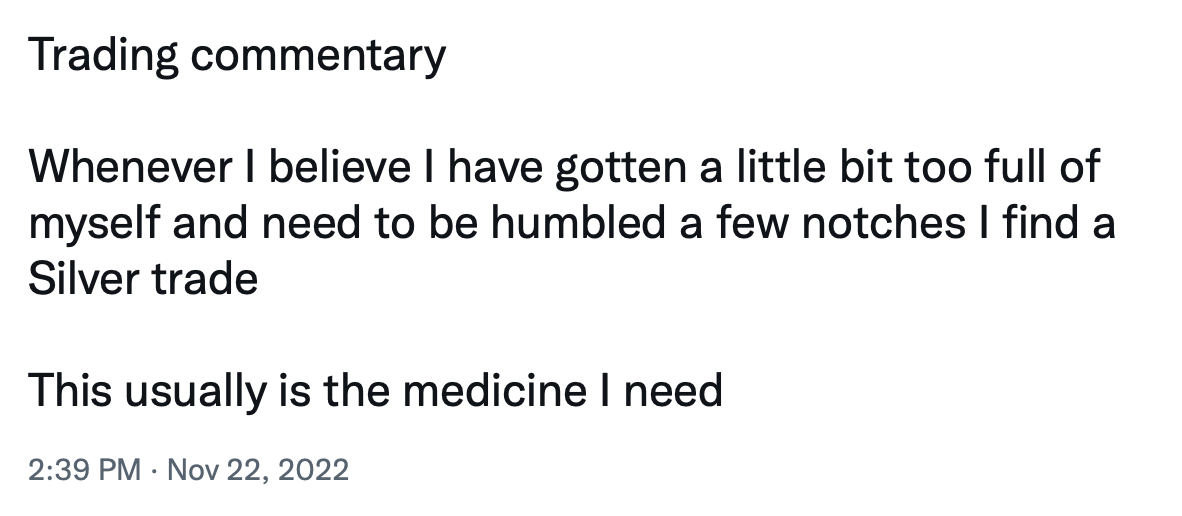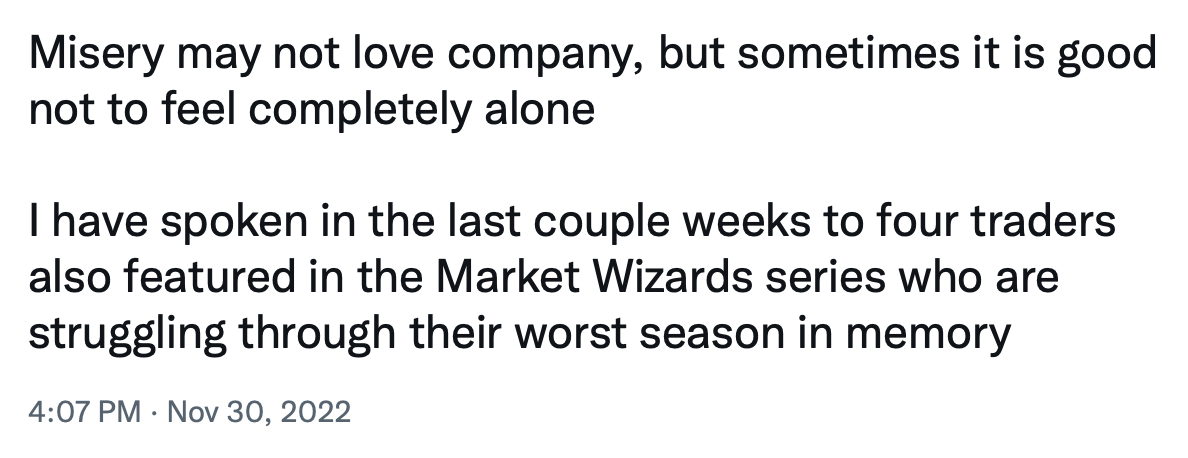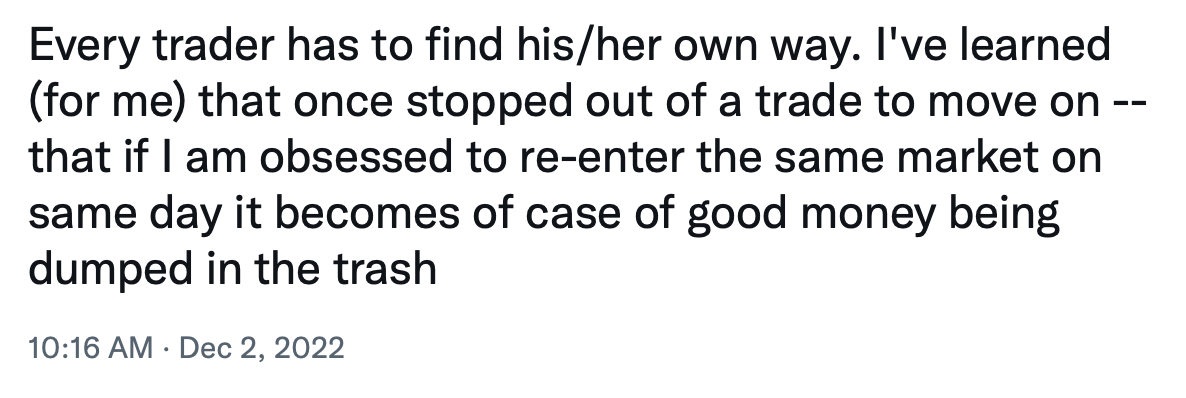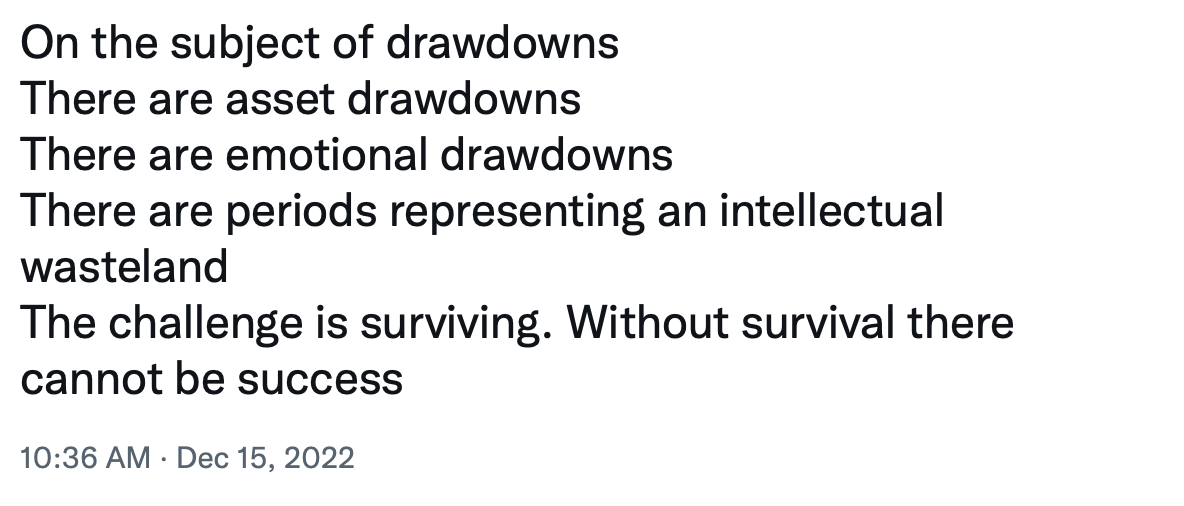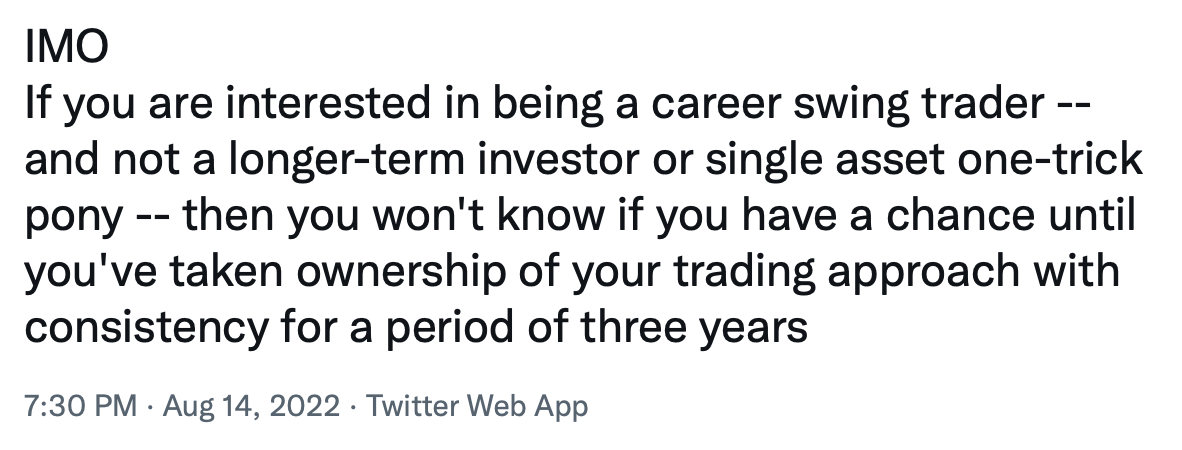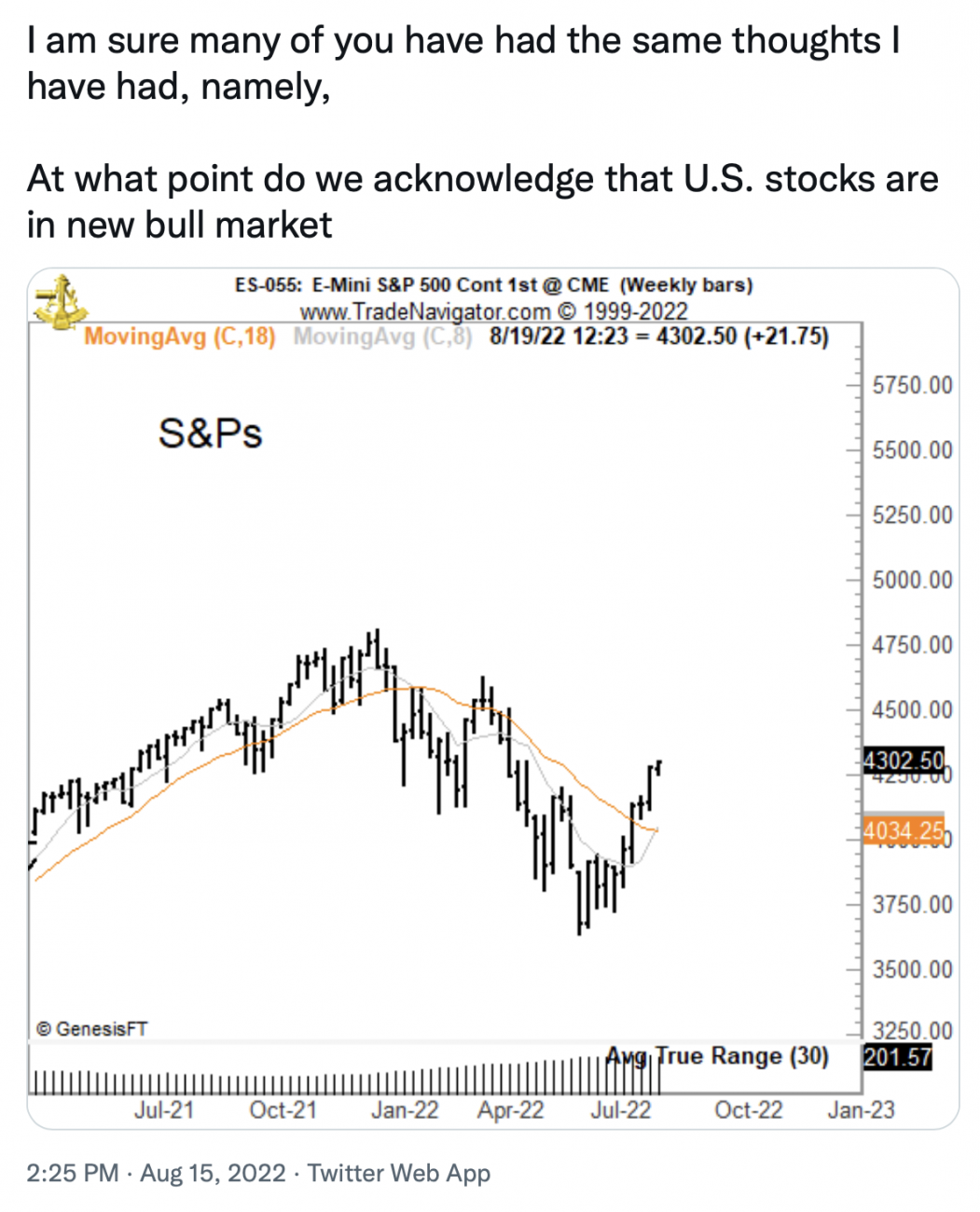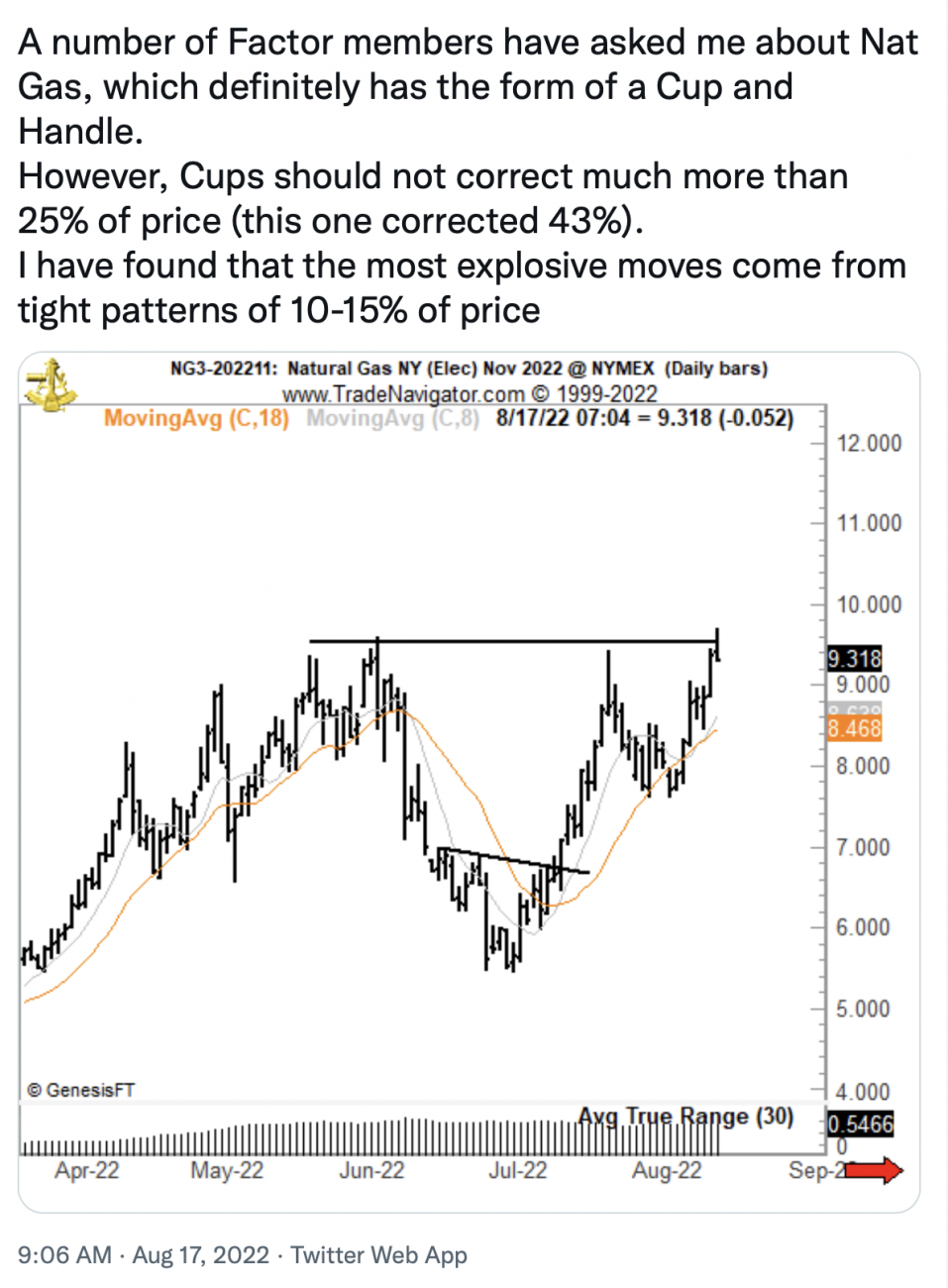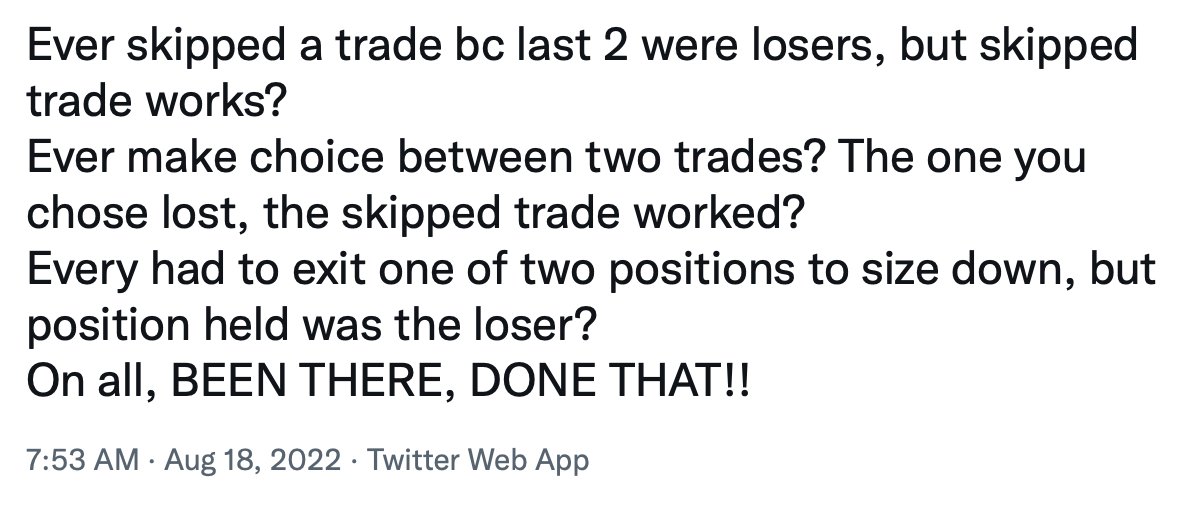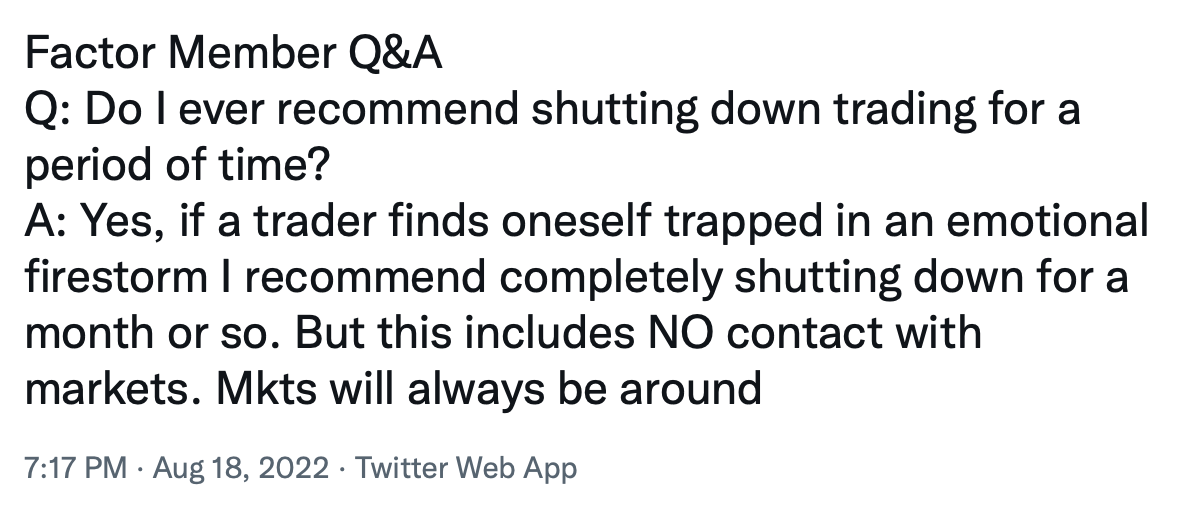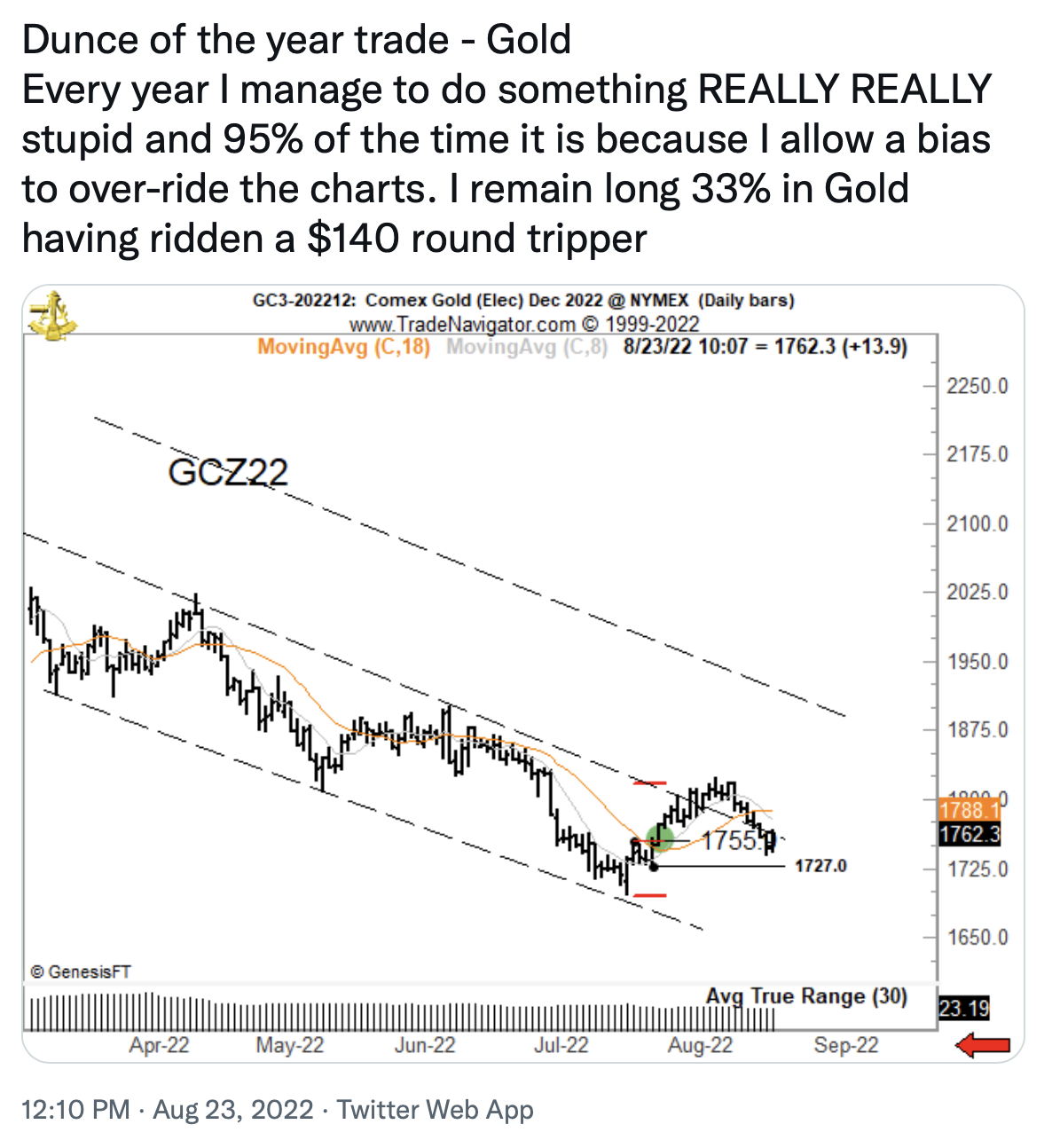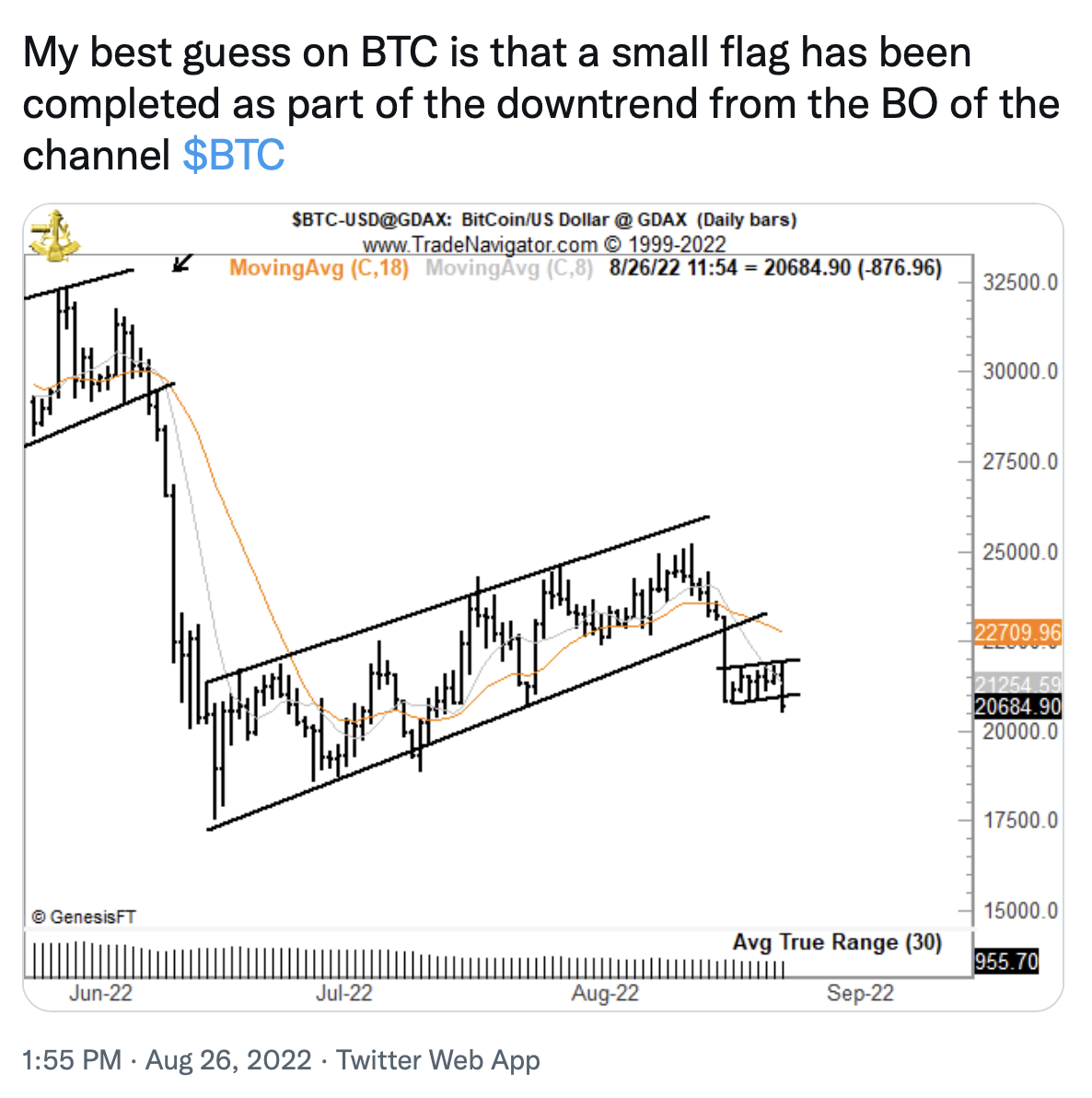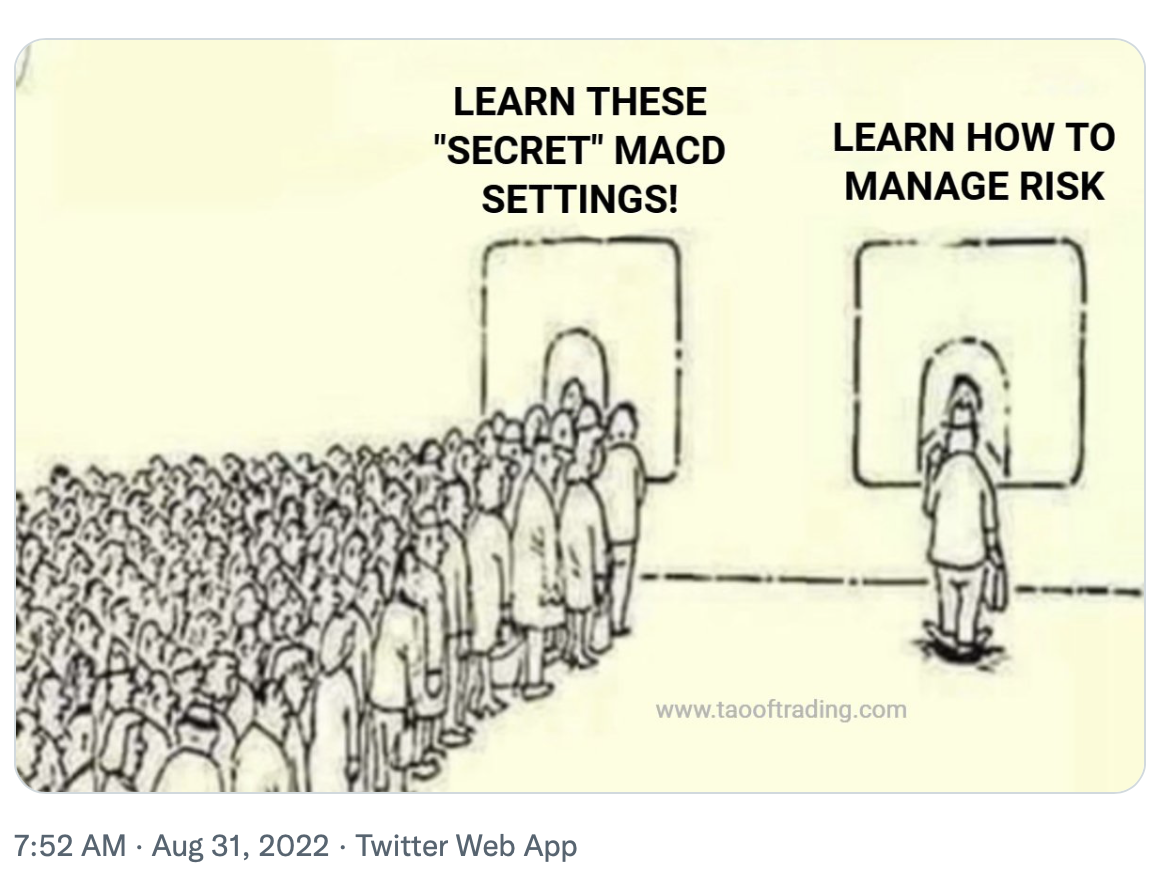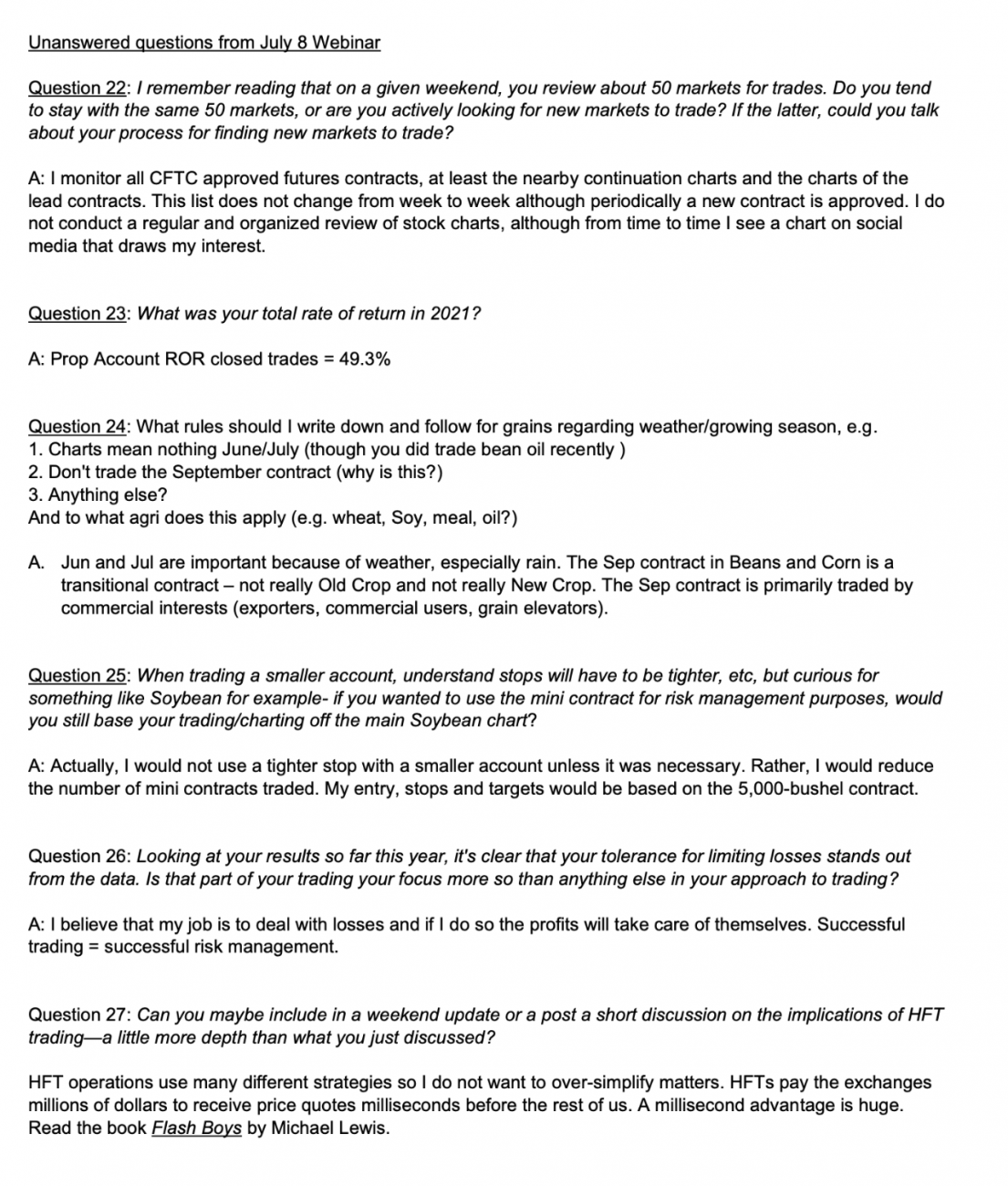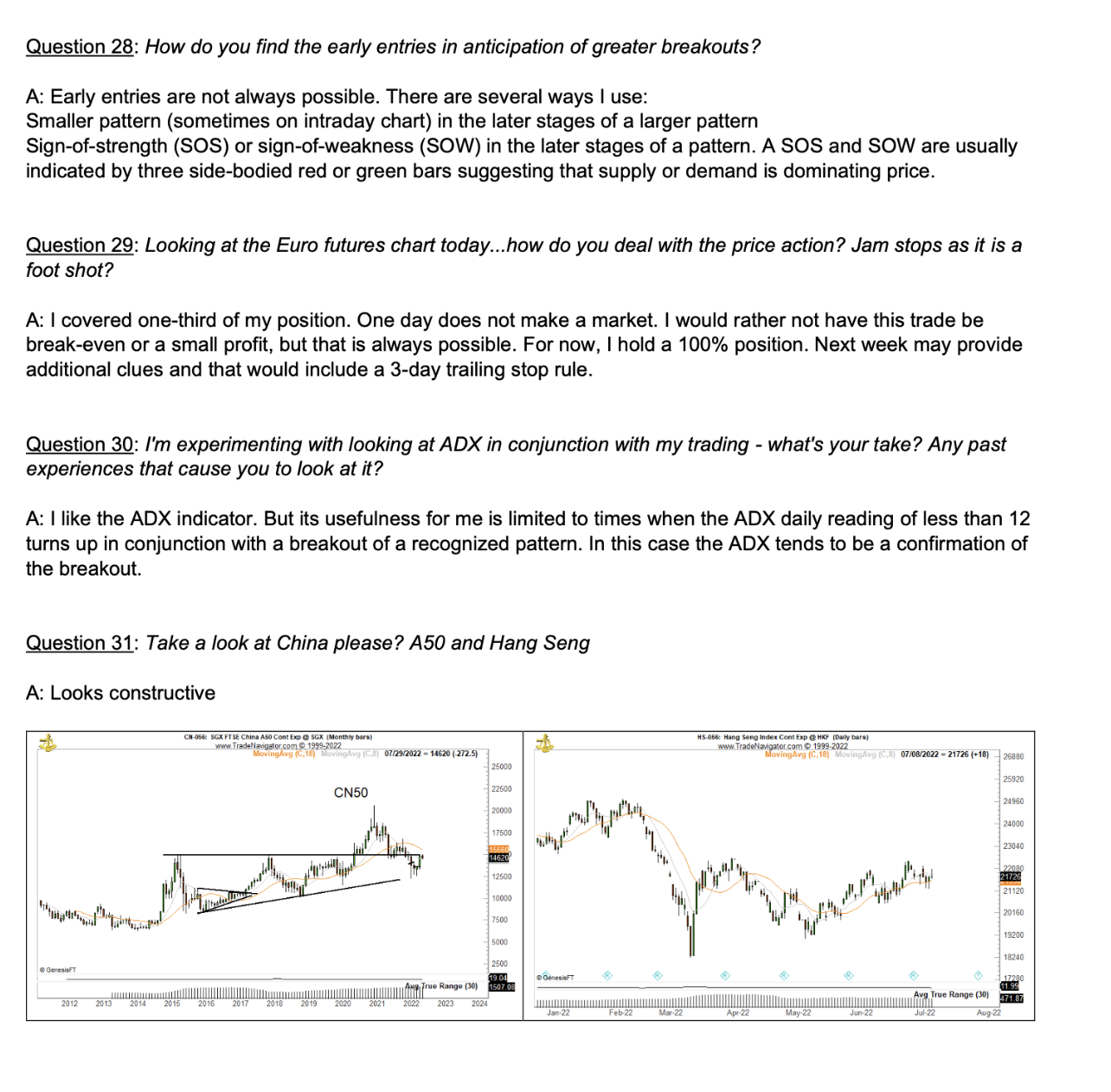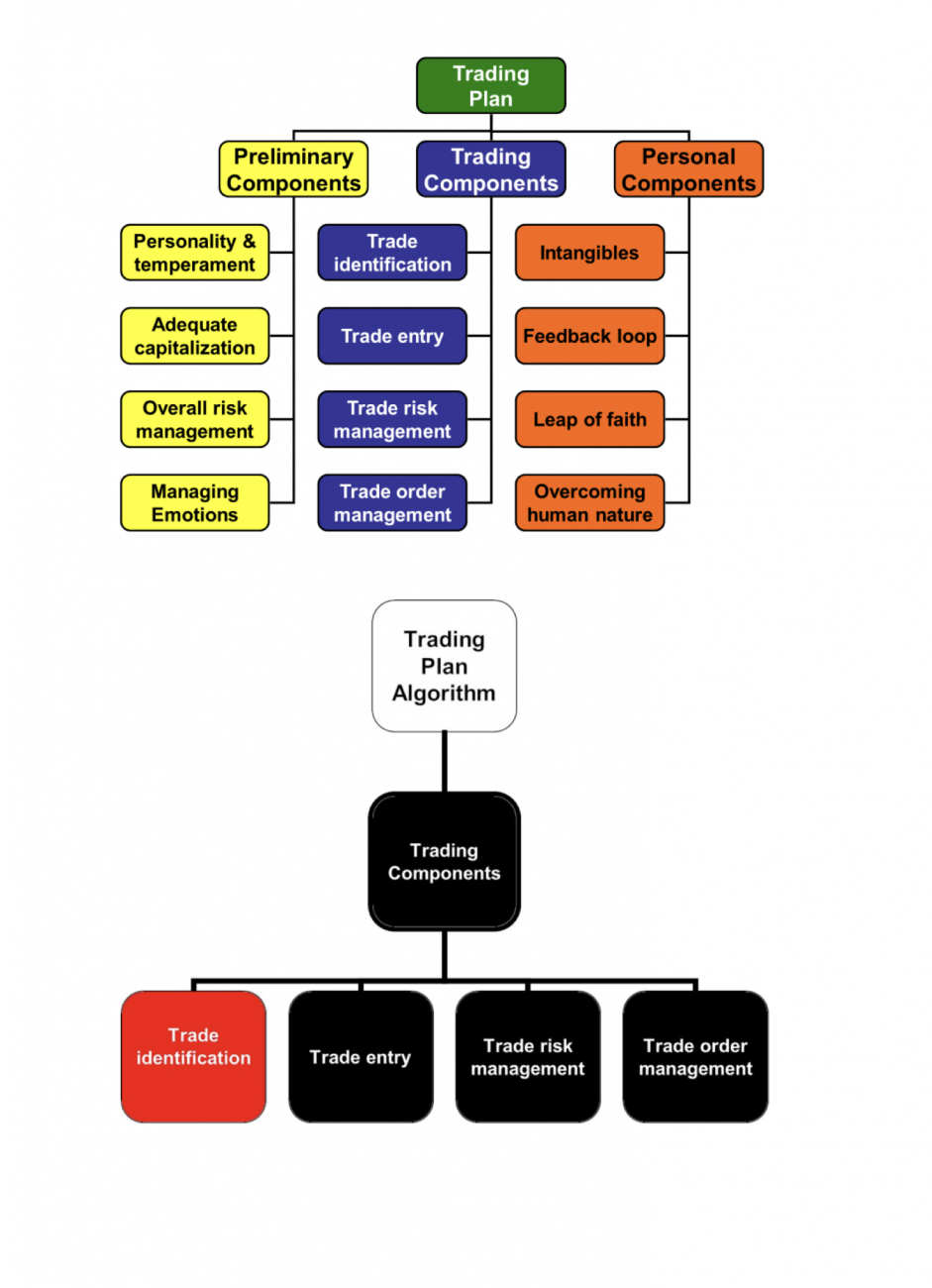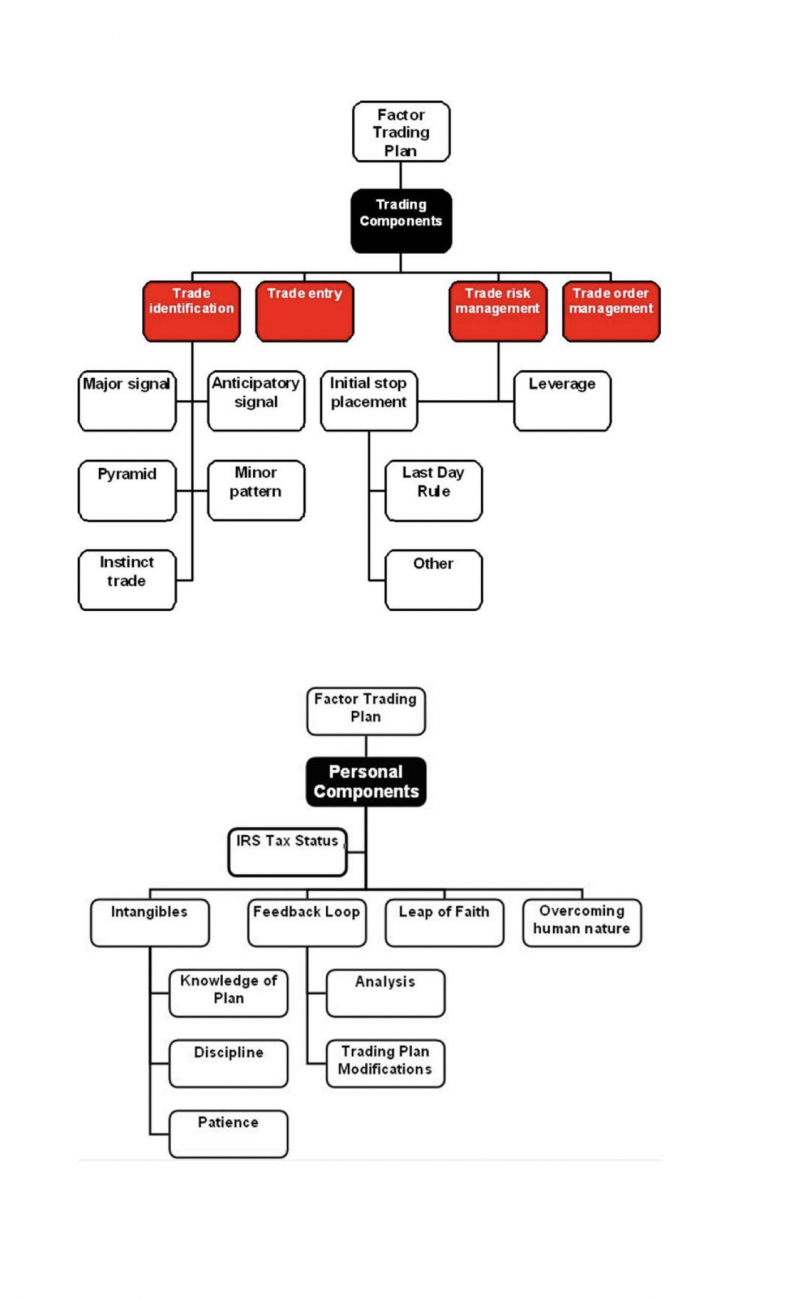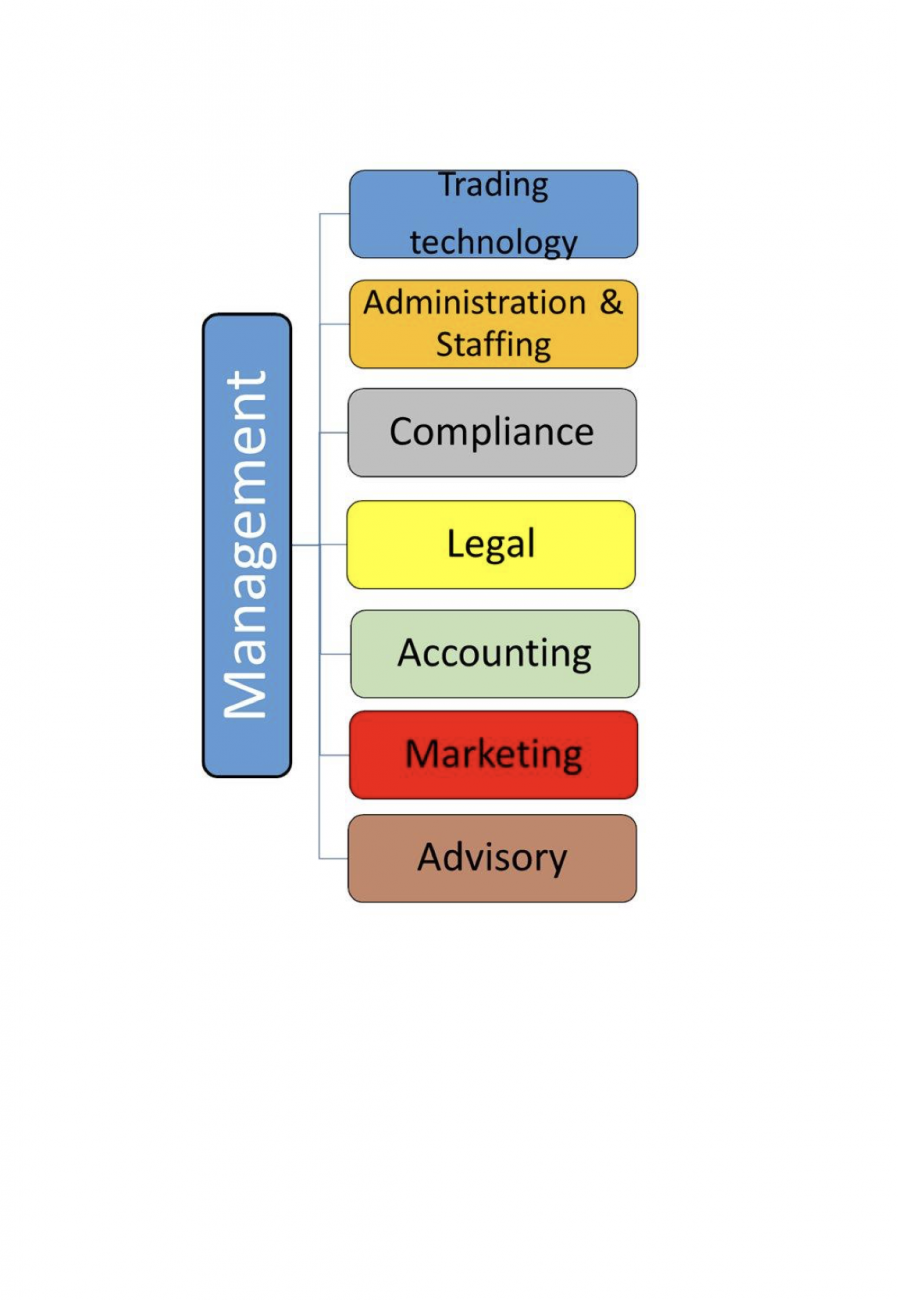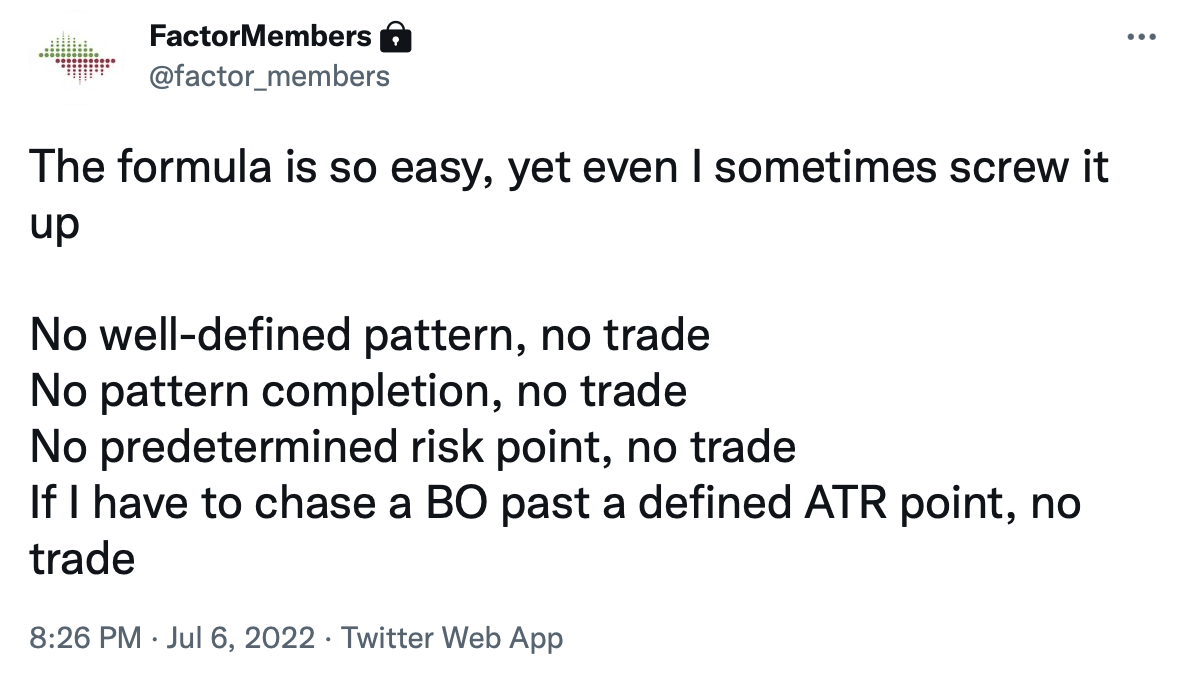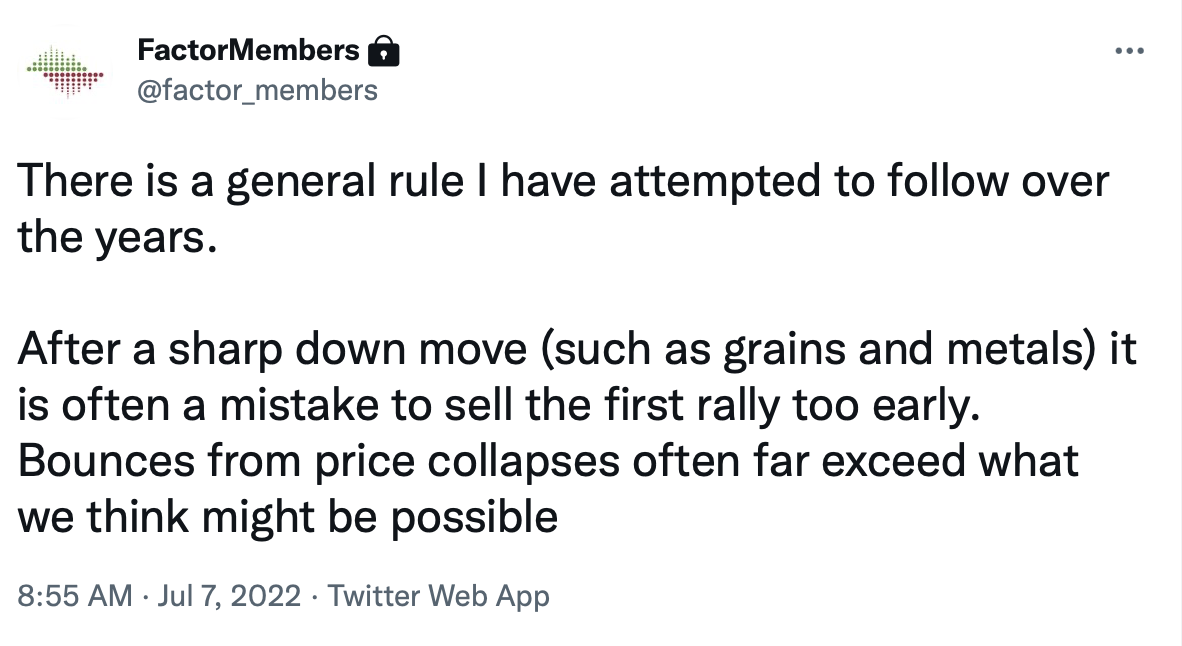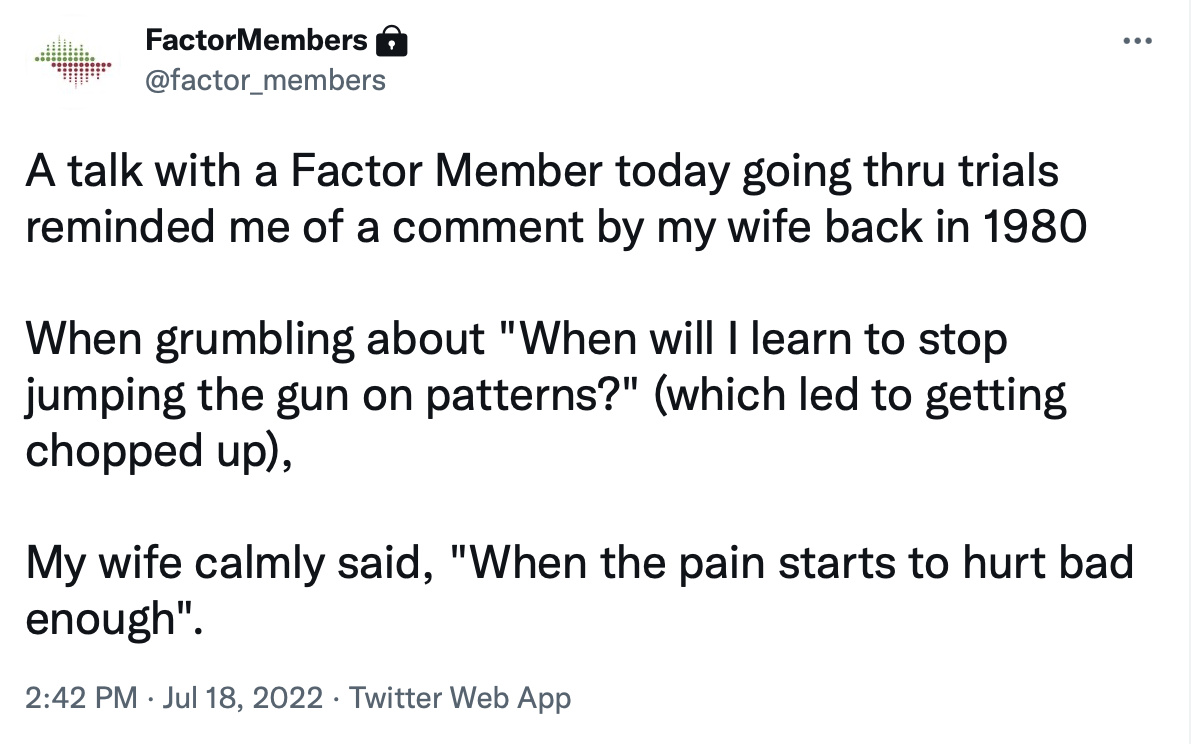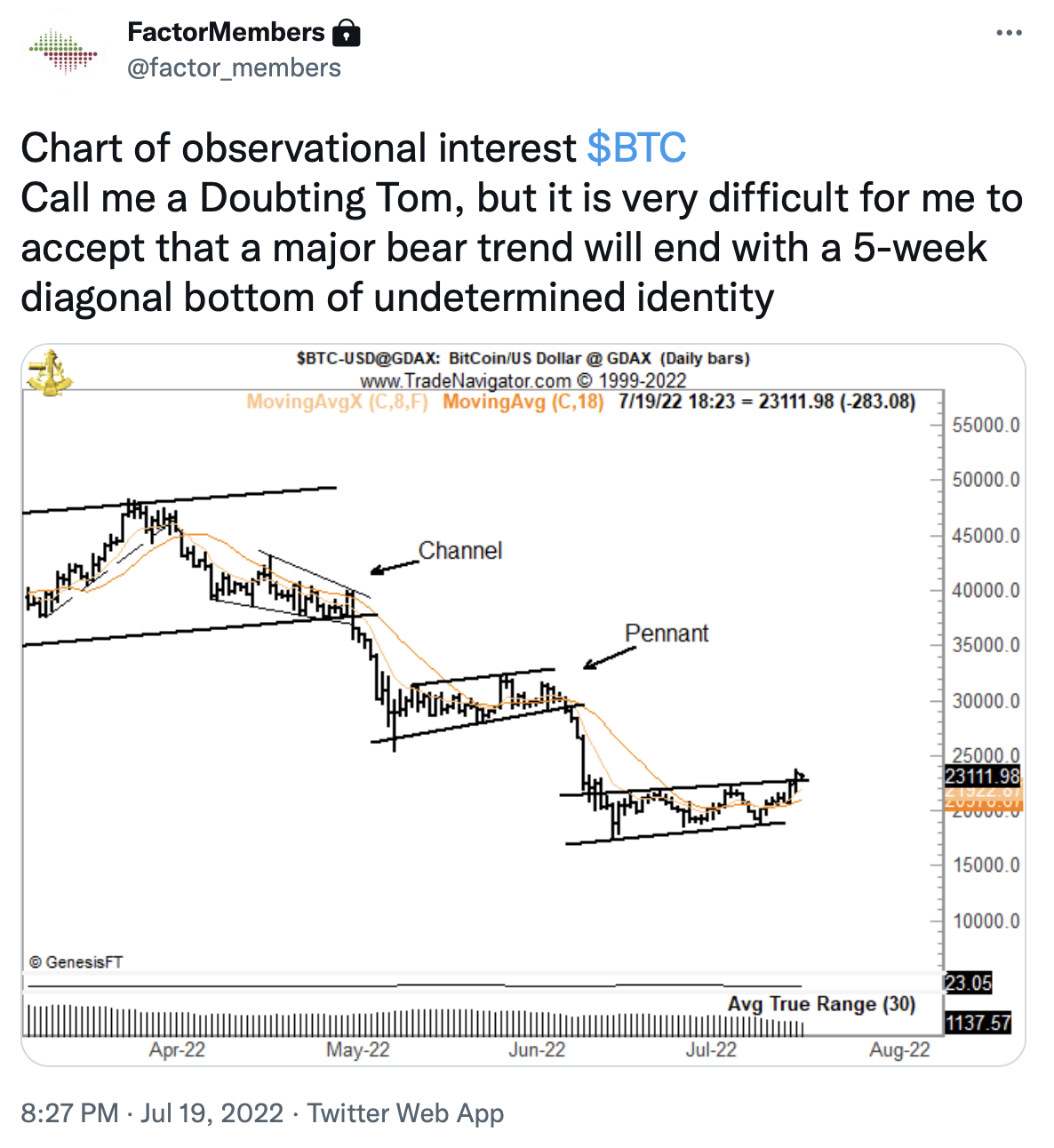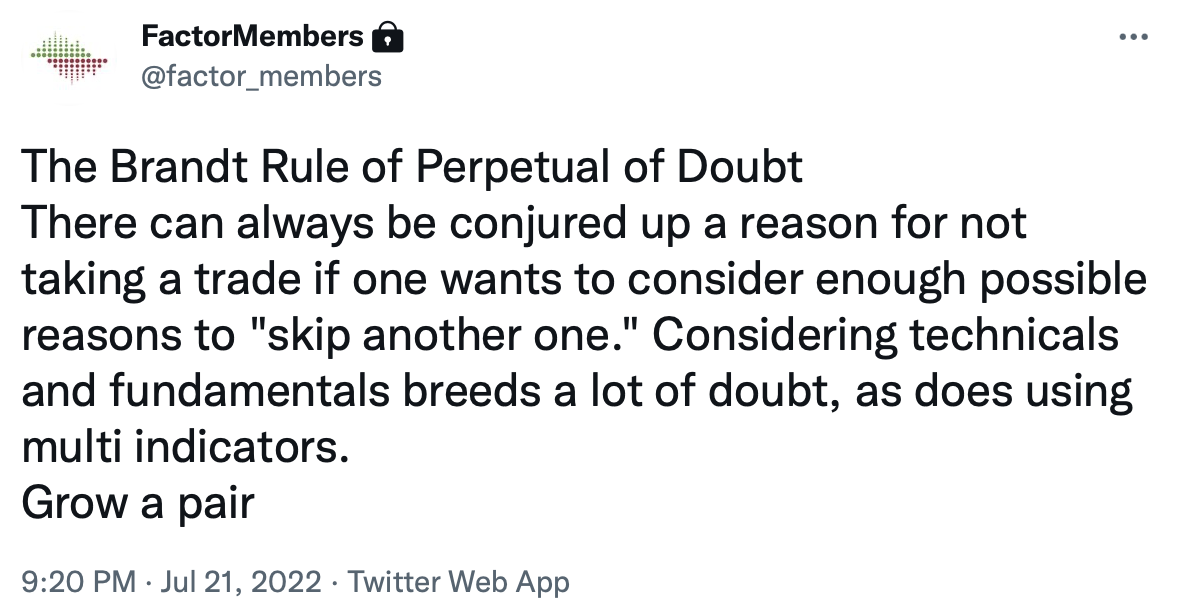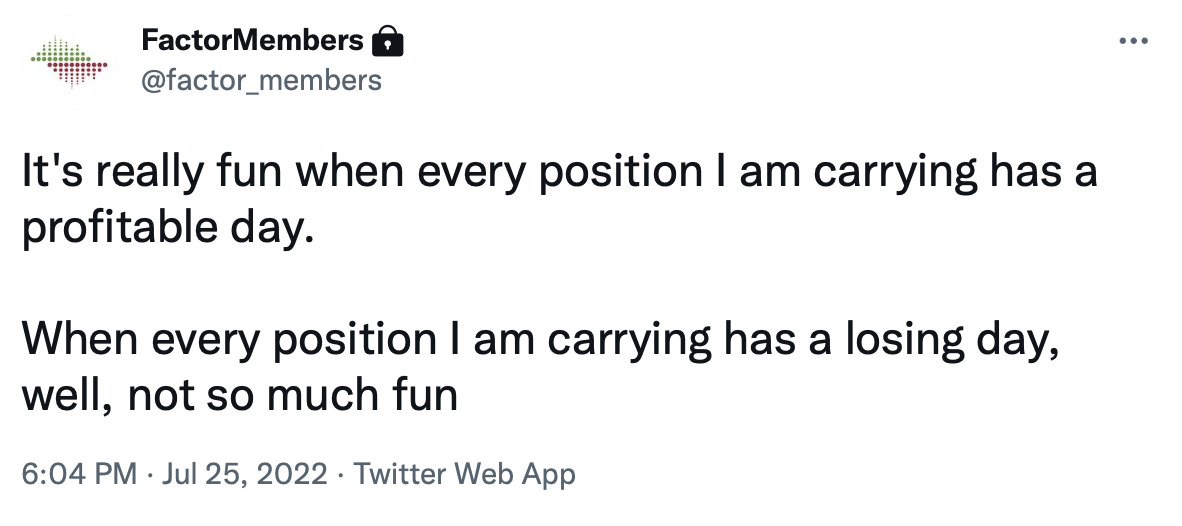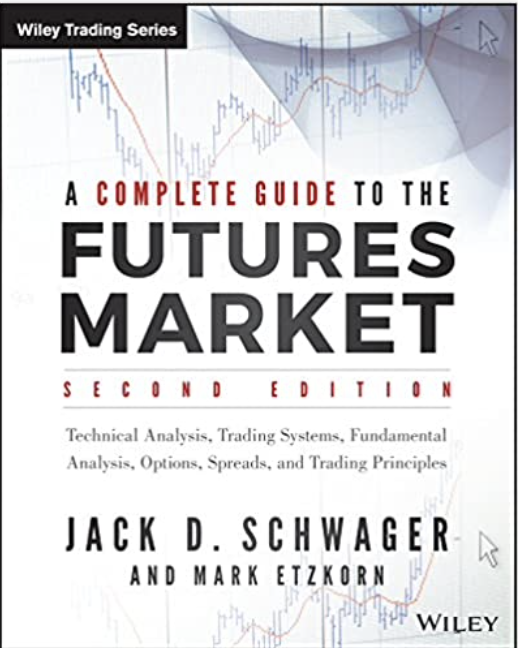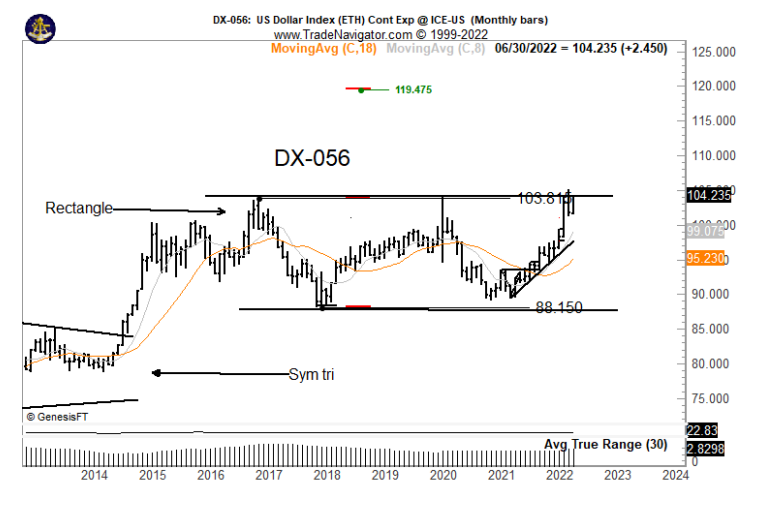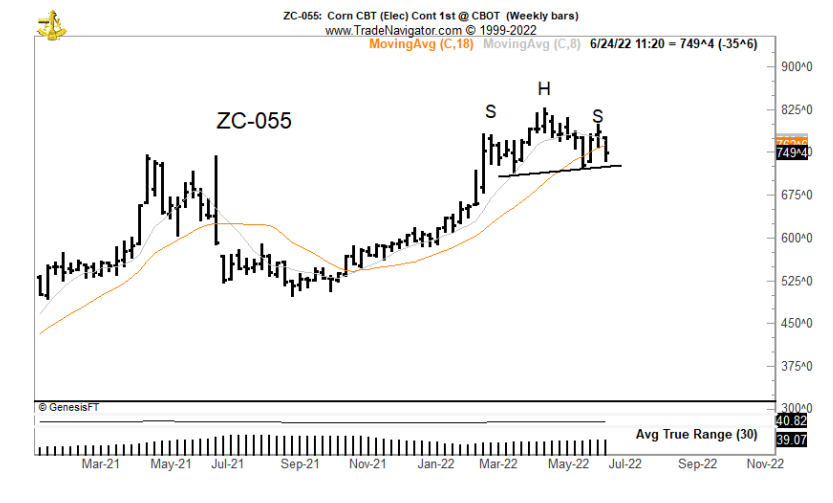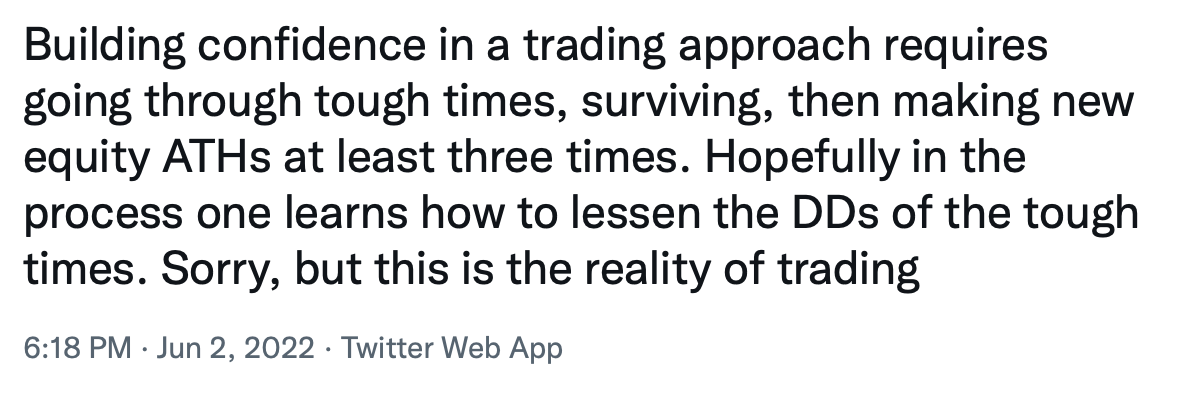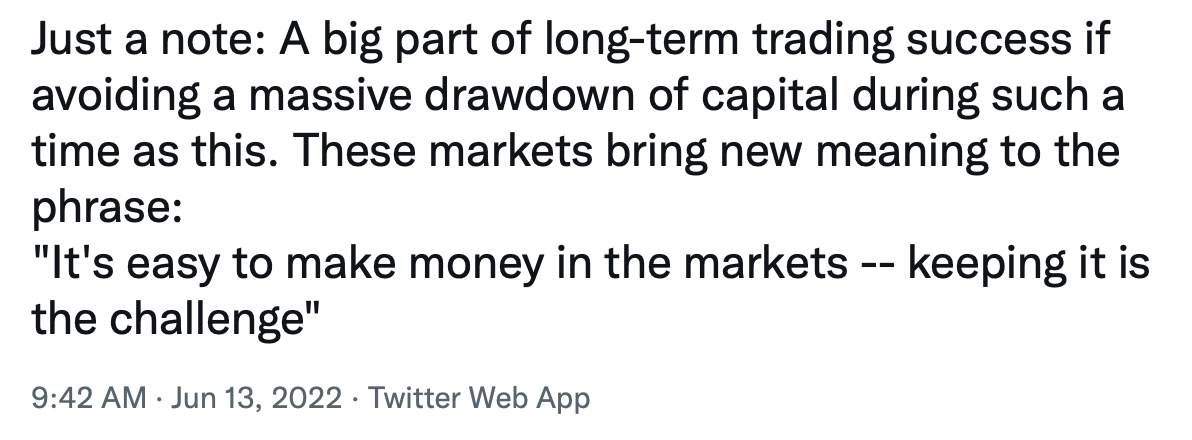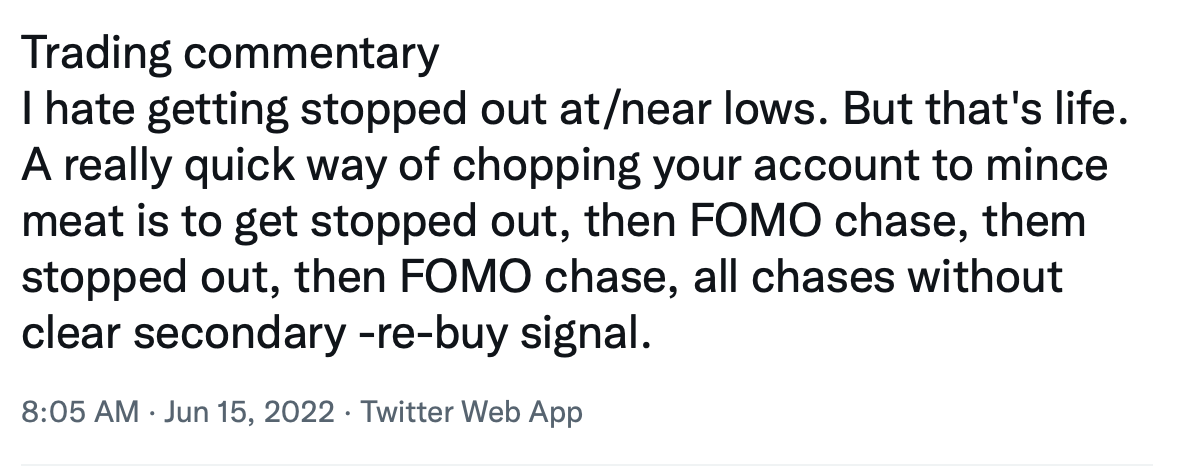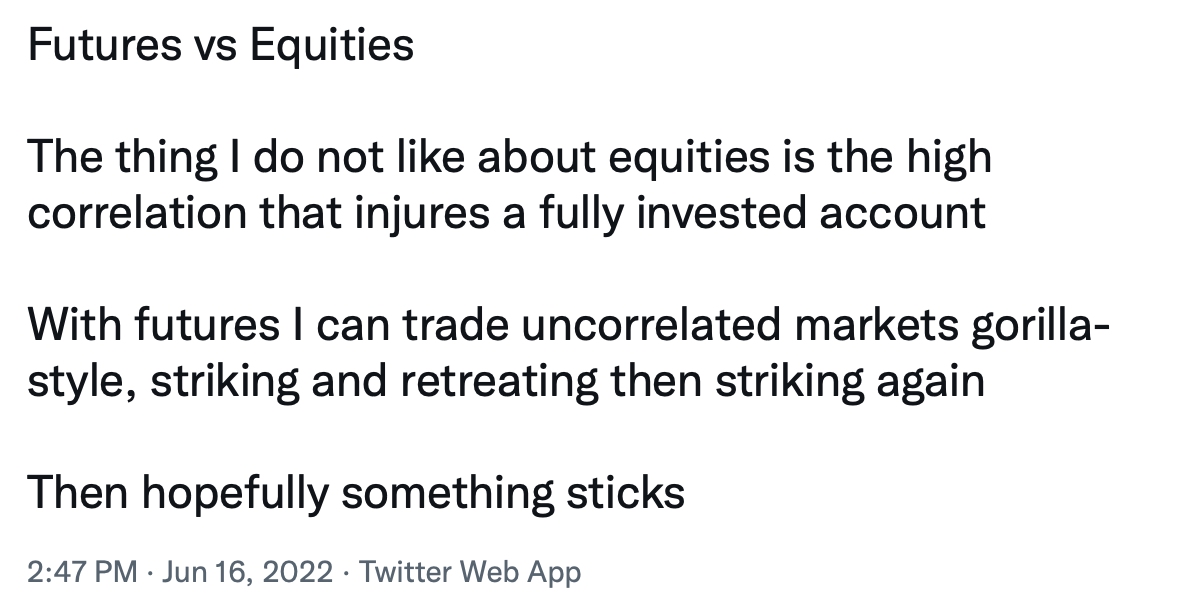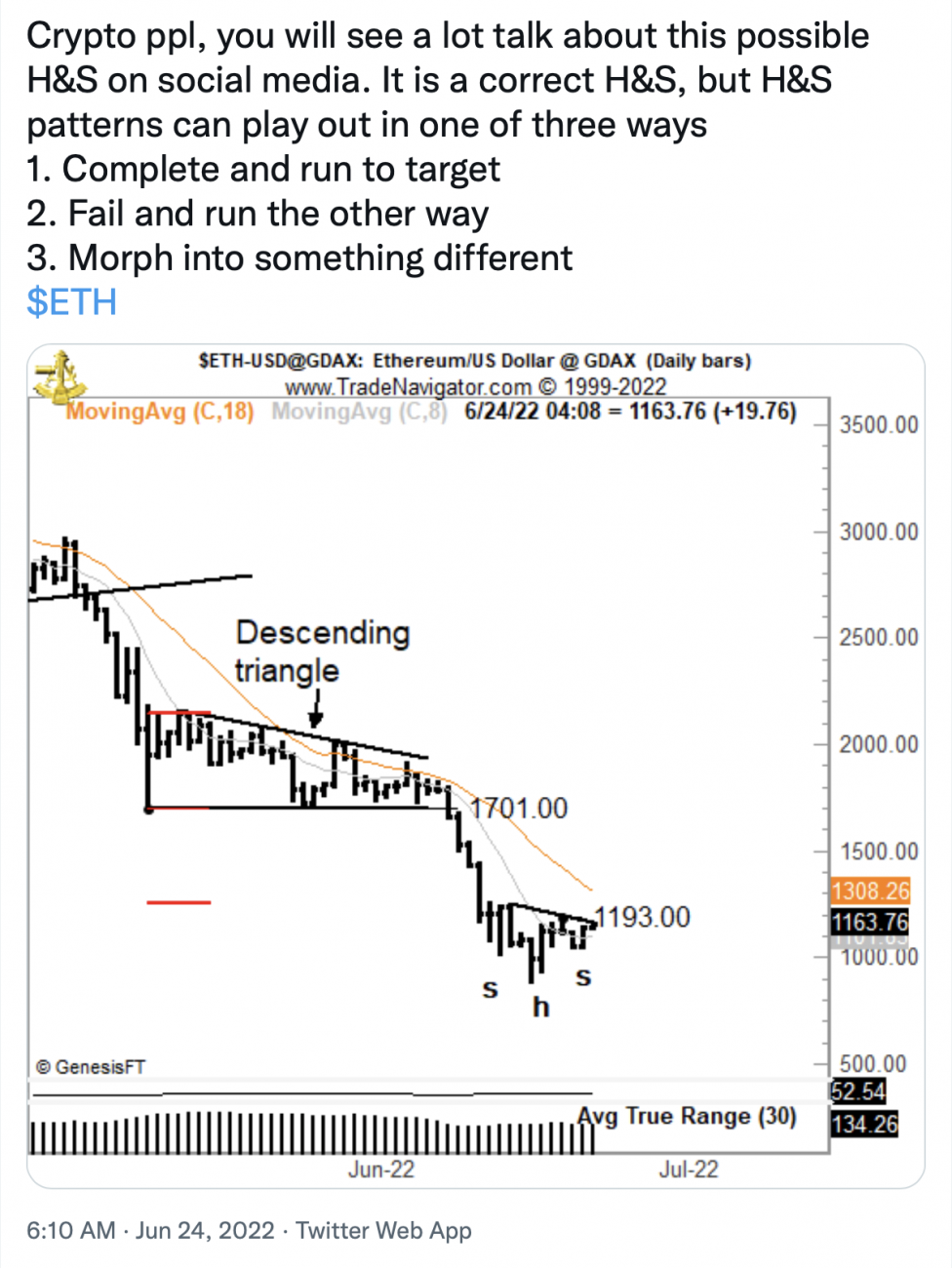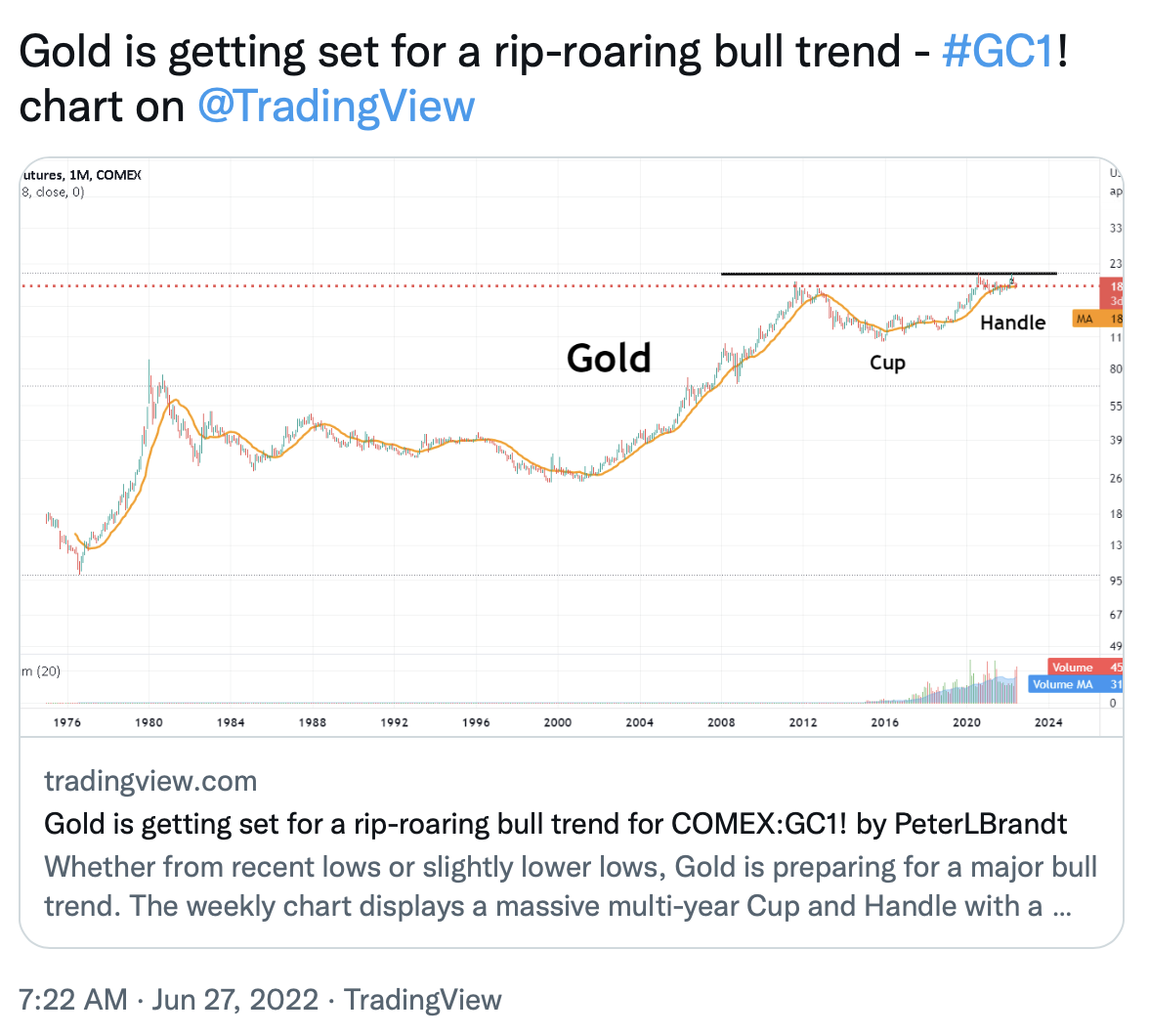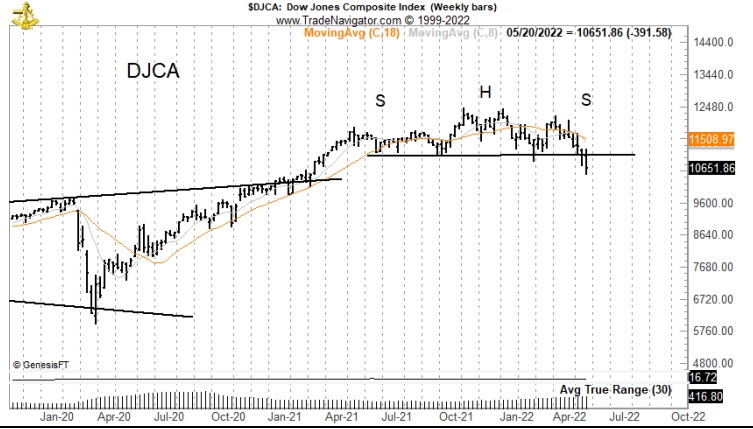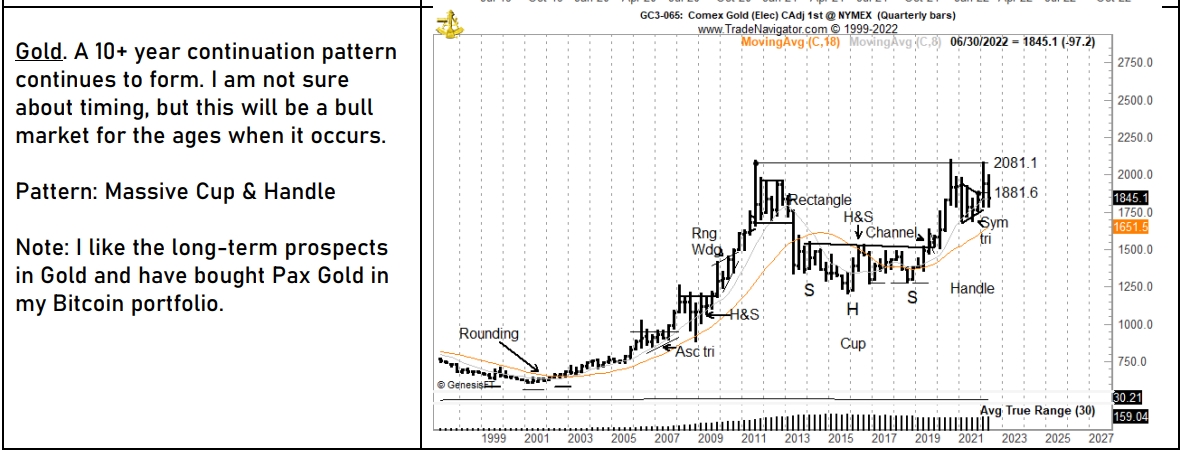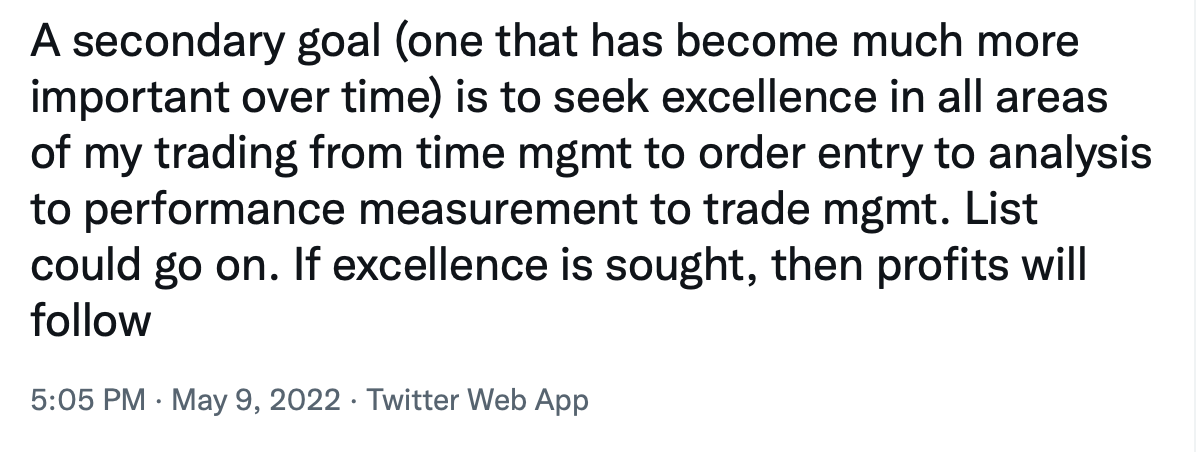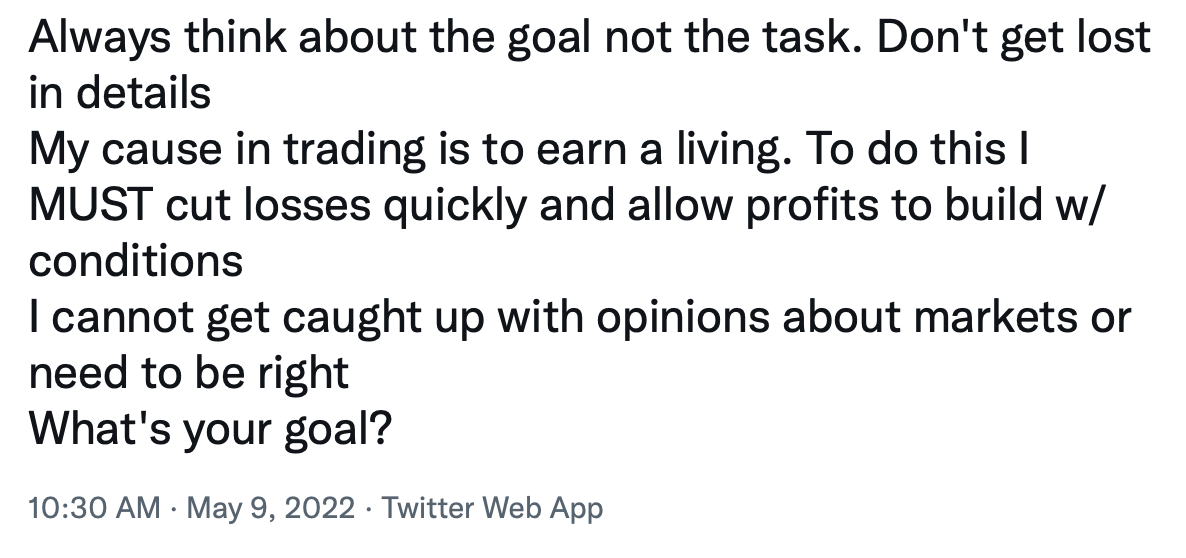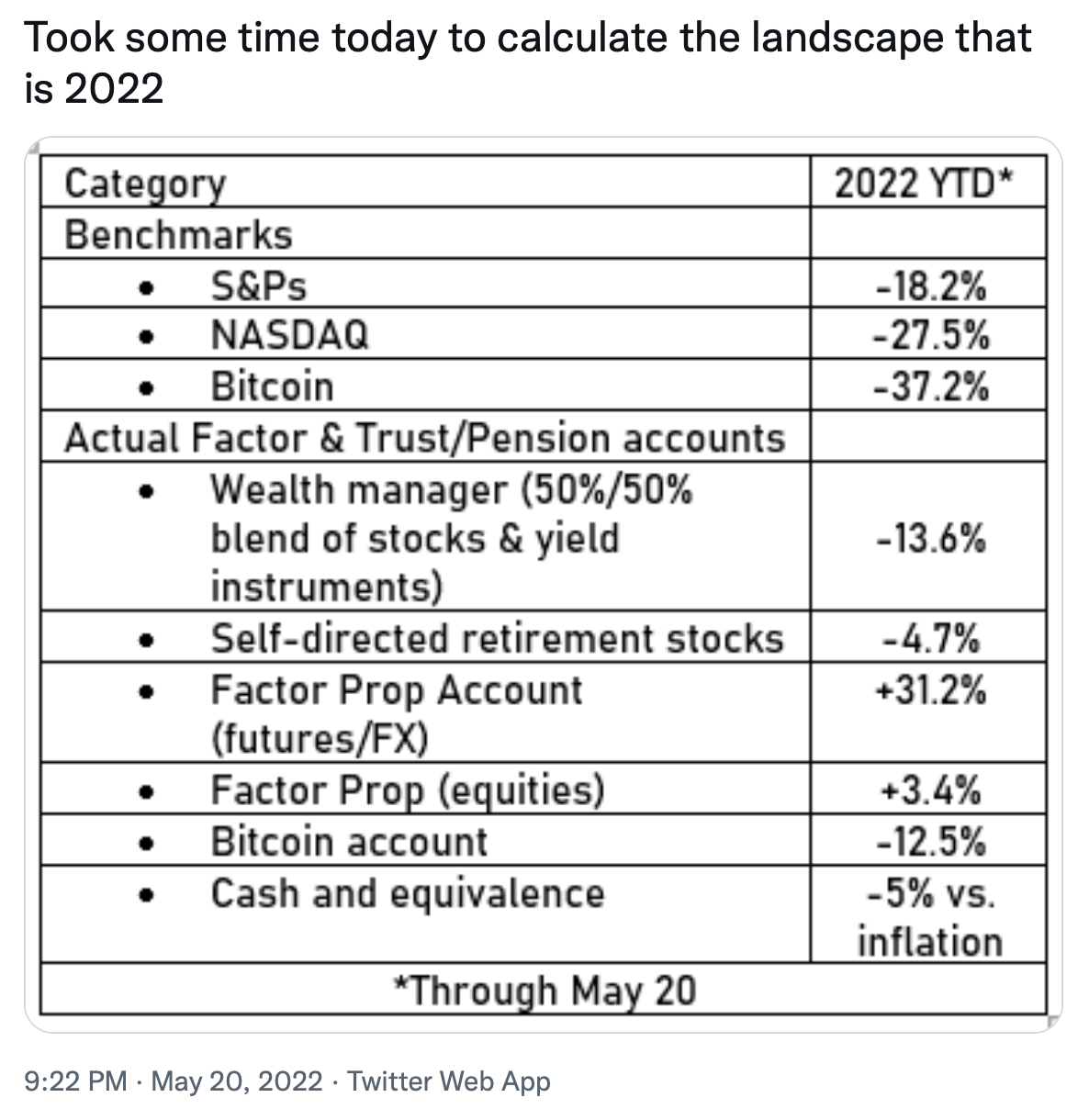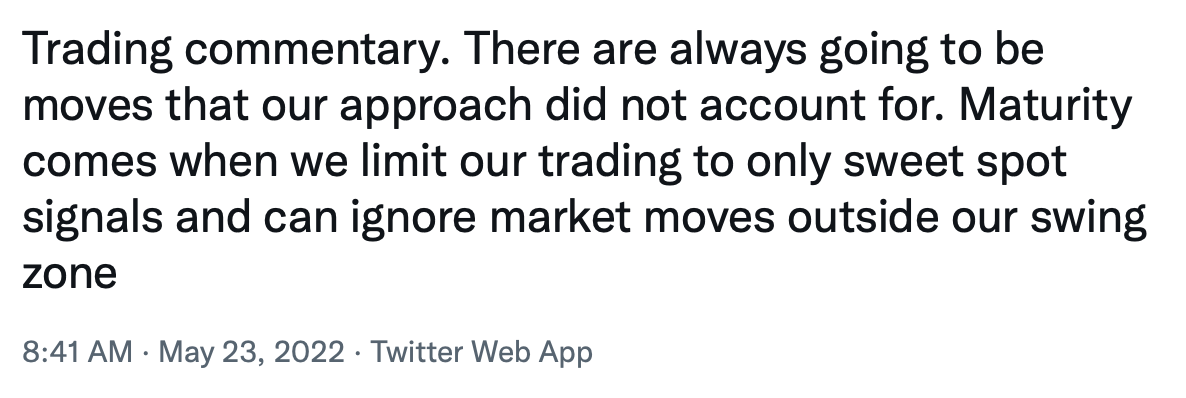August Numbers
- Tweets posted on our Private Member Twitter: 87
- Updates and Special Reports posted on the Member site: 6
Snippets from Thoughts on a Weekend Afternoon
Peter’s thoughts on the finished week and the week ahead | Issued most weekends
A short clip from a member webinar –
An excerpt from a 10 page report on DrawDowns –
Why do drawdowns occur?
Following I discuss two types of Drawdowns:
• Drawdown ending in destruction or disappointment
• Drawdowns within long-term profitability
Drawdown ending in destruction or disappointment
Here is an important point: Technically the concept of “Drawdowns” applies to long-term profitable trading programs because eventual new NAV highs are implied. A trader whose account zig-zags in a downward slope over time or never really gains traction technically does not experience Drawdown per se.
Over the years brokerage houses, regulatory agencies (such as NFA and CFTC) and academic researchers have consistently reported that fewer than 20% of futures and forex traders are profitable after three years. After five years the proportion increases because of survivors’ bias. My guess is that the data for crypto and equity traders are very different. Crypto traders who began prior to 2021 would have much higher success profiles – crypto traders who began since 2021 would be similar to futures and FX traders. Stock traders who are longterm holders have also done well. Short-term stock traders would fall into line with futures/FX traders. There are many reasons why a trader might never gain traction. I will highlight several.
Absence of a trading plan.
As insane is it sounds, many people who engage in market speculation do so without a conceived organized plan or goal. This applies to the process of identifying a candidate trade, the sizing of
trades, overall risk management and managing individual trades.
Note: There are a very small proportion of traders who do quite well, even from the start, based on instinct and feel rather than rules, but these individuals are a huge exception. How does a person know if he or she is in this group?
Answer: Profitability comes naturally and continually. I am NOT in this category.
Non-commitment to a trading program (lack of conviction). A trader may have most or all the pieces for a successful trading program, including:
• Insightful market analysis
• Trade identification
• Entry process
• Risk and trade management guidelines/rules
• Organized procedures
• Performance reviews
• Process for adopting modifications to plan
• Safeguards to protect plan from emotional swings
But still, traders may have lacked the conviction to go “all-in” following the plan. Self-doubt and second guessing are huge enemies of trading success. A trader who does not follow his or her trading plan does not really have a trading plan.





















